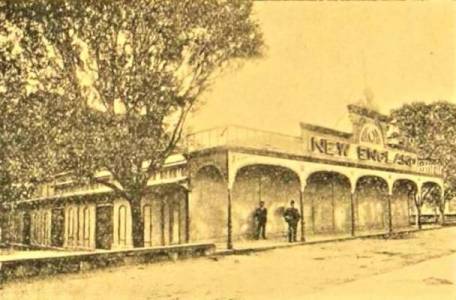
Source: Almanaque de Ferrol, Year 1908, page 25
Author: Eduardo Freire Canosa
(University of Toronto Alumnus)

Source: Almanaque de Ferrol, Year 1908, page 25
According to figures compiled by the General Directorate of the Spanish Geographical and Statistical Institute, the city of Ferrol had 23, 769 inhabitants as of December 31, 1900 (Almanaque de Ferrol [ADF]. Year 1907, page 18). This number amounted to about half the peak population attained by Ferrol toward the end of the eighteenth century: 45-48 thousand Ferrolians.
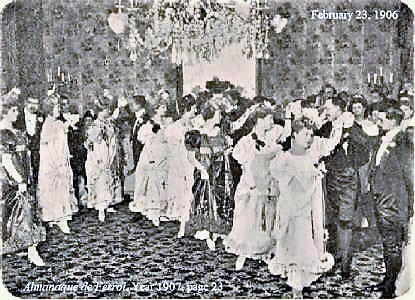
Ferrol laboured under a severe unemployment "crisis" in 1906. This circumstance did not obviate the celebration of Carnival or of a concurrent "grandiose" masquerade ball at Navy Command Headquarters on February 23, 1906, where, writes the ADF chronicler, "the aristocratic elegance of the eighteenth century was brought back to life...under the hexing magic chivalry of the house's tenants" (photograph on the right: start of the minuet).
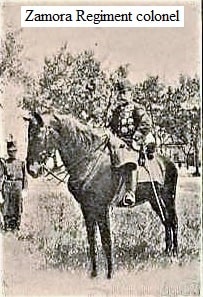
Rumour spread in the month of March that the Zamora Regiment (photograph on the left) would be removed from Ferrol. This harbinger of "a new distress" for the city roused every social class, even the "depressed" and "misery-ridden" households. According to the ADF chronicler, everyone rallied to the regiment's defence and Town Hall promptly found new barracks for the troops.
Town Hall convened "good Ferrolians" from March 2 forward to "launch an active campaign against the workingman's crisis." The municipal campaign created commissions to look after the public works required for the harbour, the railway, the municipality, a new garrison, the conveyance of drinking water to the city, the demolition of outdated bulwarks, the building of schools. These rookie commissions met enthusiastically throughtout the month; they discussed, proposed and submitted "enlightening reports" on all these issues. However, despite the hustle and bustle or the commissions' ambition and vigor, nothing in fact materialized, "not even one item of that program that can be called the lengthy checklist of an ambitious lottery propitious to Ferrol."
In April a "Holy Mission" of two Jesuit missionaries arrived during the first week. The "Reverend Fathers" preached in the parish church of San Julián (cf. the "Holy Mission" of 1960, described in the RELIGION section of Chapter 12, "Bazan Magazine for the Year 1960," of the homepage, "When I Was A Child In Ferrol, Spain"). They put up with some "mild" anti-clerical heckles by "a few," but everything was ultimately forgiven in the "solemn and moving function" of April 8.
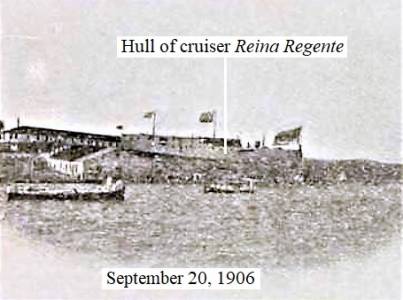
On September 20 the launching ceremony of the cruiser Reina Regente's hull at 2:00 PM cheered Ferrol briefly. The original drafts for this ship had first seen the light more than ten years back.
"The launch of the Regente is the last record stamped on the Shipyard's registry," writes the ADF chronicler, "...may that page's blank space be soon filled up...this is not the exclusive longing of Ferrolians, for the chronicle of military factories has always been...a reflection of the prosperity or misfortune of the Spanish kingdom."
After the festivities coeval with the launch finished, and the warship was formally transferred to the Arsenal for the furbishing of its deck and the mounting of its guns, a bitter apprehension—a dread of the future—descended over the city, and its streets fell silent once more. No doubt many Ferrolians remembered having been told or having heard as children that "in the dour days of 1815 the people had died of hunger even as the authorities withheld fifty-eight months of back pay."
IndexClicking on a number will take you to the corresponding chapter right away |
|
1. Year 1906: The New England Opens
2. Year 1907: Accolades 3. Year 1908: The Popular Little Theater On Church Street 4. Year 1909: The British Are Coming, The British Are Coming! 5. Year 1910: The New England And The British Colony 6. Year 1911: Beating The Odds 7. Year 1912: Yet Another Bountiful Year 8. Year 1913: The Apaches of Paris 9. Year 1914: The Military Intervention 10. After The Dismantling |


The last Town Hall plenum of June 1906 agreed to examine at its next sitting the application of Vicente Auboín Barcón for a permit to build "a wood pavilion on the space behind the Jail for the purpose of showing films or analogous entertainment" (El Correo Gallego [ECG]. July 17, 1906, page 1).
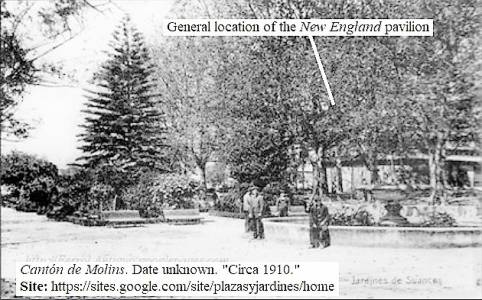
The sitting of July 19 supplies a fuller account. The wood pavilion was meant to have a brick foundation and its precise location would be the center of the gardens behind the Jail (behind the trees in the photograph to the right). Two appointed commissions advised Town Hall to grant the permit provided the edifice met all legal requirements covering theaters and provided the solicitor agreed to pay a rental fee of 250 Pesetas per trimester (ECG. July 20, 1906, page 2). Town Hall handed the permit and the newspaper disclosed that the new pavilion would be named New England.
Construction began on Thursday July 26. The job was expected to be finished in the last days of August (ECG. July 27, 1906, page 2). "We have the best references concerning the future pavilion," the newspaper stated, "its owners do not skimp anything so customers will find a good level of comfort inside."
The New England theater opened on Saturday September 15 with four shows, 6:30, 7:30, 8:30 and 10:30 PM.
The identical package of short films was shown at 6:30, 8:30 and 10:30 PM. Their titles were:
A different set was shown at 7:30 PM. The titles were:
Ticket prices for every show were 0.50 Pesetas for a padded seat with armrest, 0.30 Pesetas for sitting on a bench, 0.20 Pesetas for general admission.
El Correo Gallego was full of plaudits for the new venue of entertainment. "Great pavilion New-England" and "two grandiose programs" were regular headers during the month of October. "All the daily sessions of the New England pavilion continue to register extraordinary attendance" (ECG. October 18, 1906, page 2). "Yesterday evening, like the previous evening, an extraordinary number of people gathered in the New England pavilion to applaud the dazzling film, Un viaje a Suiza (A trip to Switzerland). A movie of similar impact will be shown today, Cristóbal Colón descubriendo las Américas " (ECG. October 19, 1906, page 2).
Some silent films shown at the pavilion linger in cyberspace. The first two beneath were shown at the New England on October 10, 1906, and the last two on December 4.
The Tragic Accident of November 13, 1906. The New England was "commended to the skies" by its customers after announcing it would stage a benefit show on November 16 to succour the orphans engendered by the "woeful accident" of the 13th. The theater's box office would be handled by specially appointed commissioners, and the proceeds go directly to relieve the orphans.
On Tuesday November 13 at 9:30 AM near the Central Market "there occurred an extremely sad mishap which left a searing impression on everyone who witnessed it" (ECG. November 13, 1906, page 2). Several warehouse boys fumbled a butt barrel full of wine as they were transferring it from cart to depot on this street. The butt barrel rolled down at breakneck speed and struck three female costermongers at the bottom of the run. Ramona Gil, 46 years old, whose husband was overseas in Cuba, mother of five children, suffered a horrible head injury. The hapless woman died three hours later, calling and weeping for her children. "When these arrived she had already died." "Those who saw the five weep bitterly around their mother's corpse at Casa de Socorro [Social Welfare Home] left vividly impressed." On the morning of the 14th her brother, a fisherman living twenty-one kilometers away from Ferrol, arrived to the Social Welfare Home, kissed his dead sister and embraced the five children, Mercedes, 14 years old, Angelita, 13, José, 11, Manolita, 8, and Josefina, 11 months old.
Fernández López the city's mayor ordered that the five orphans be given room and board at his own expense...The five creatures have been housed in the ground floor of Francisca Díaz's house...Two other women have also volunteered to help take care of the orphans...Central Market costermongers set up a collection...a separate one furnished 190 Pesetas...All the funeral expenses of Ramona Gil's burial have been waived...The mayor, a chaplain, an alderman and a merchant will preside the interment scheduled for 4:30 PM today...Yesterday at 7:30 PM another victim of the accident passed away; her name is Luísa Mera Serantes, 60 years old, a widow who leaves a 38-year-old handicapped son behind.(El Correo Gallego. November 14, 1906, page 2)
El Correo Gallego of Thursday November 15 informed that hundreds of people had the day before filed past the corpse of Ramona Gil lying in state at Casa de Socorro. Many people deposited alms on the collection plate set on a table at the entrance. The captain general of the maritime department donated a 50-Pesetas bank note to assist the orphans. Several collection drives throughout the city netted 467 Pesetas with thirty cents. Note: This was the amount handed over to the Mayor (End of Note).
Shortly before 4:30 PM the corpse of Luísa Mera Serantes arrived outside Casa de Socorro, and moments later, both dead women were escorted to the Municipal Cemetery. "A huge crowd with all social classes present made up the cortege."
El Correo Gallego of Friday November 16 told that New England Theater had deferred the benefit show to Sunday, an operetta company performing in A Coruña had declined the pavilion's offer of a special contract. Consequently the benefit show would enlist local talent only, the municipal band would entertain the audience during the intermissions. Note: On the same day a man and a woman were arrested for publicly begging alms in the name of the orphans; no money was found on them at the police station (End of Note).
We understand that the charitable Business [i.e., the New England theater] will also distribute a portion of the show's revenue to the unfortunate, poor, sick son of the deceased Luísa Mera Serantes as a consequence of Tuesday's sad event.We deem the fête organizers' decision very praiseworthy and very equitable.
(El Correo Gallego. November 16, 1906, page 2)
El Correo Gallego of Saturday November 17 apprised that "a huge number of people" was preparing to attend New England's benefit. Three shows scheduled for 4:00, 6:00 and 9:15 PM had identical format (see below). The ticket prices for 4:00 and 6:00 PM were 1 Peseta for a padded seat with armrest, 0.50 Pesetas for sitting on a bench, 0.30 Pesetas for general admission. The rates for the 9:15 PM show were 50% higher except 0.40 Pesetas for general admission.
The newspaper also informed that a "distinguished friend of ours, a wealthy landowner who dwells in a bayside hamlet, has conferred on us the pleasurable task of distributing 50 Pesetas among the unfortunate offspring of the victims," and it continued, "Today we have given 8 Pesetas to each one of Ramona Gil's children and 10 pesetas to Luísa Mera's son."
Victoriano Suanzes dedicated pages 45-48 of Almanaque de Ferrol, Year 1907, to the "dazzling" history of Airiños d'a miña terra (photograph below, left). The history of Airiños, he affirms, is a long list of "unremitting triumphs."
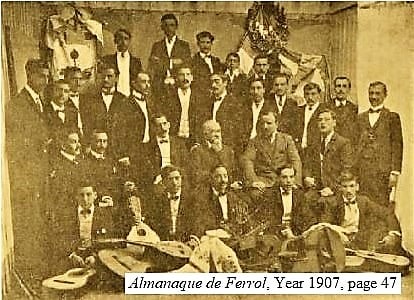
A few foolhardy, vibrant, enthusiastic young men began it all when they decided to get together to sing in a "very modest" locale, furnished only with a few benches of pine, which they had crafted themselves, and a straw-cushion chair reserved for their conductor, Seoane Pampín (second row, centre).
In October 1906 this motley crew earned first prize at a national competition of serenaders held in Lugo City. Theirs was a "colossal triumph" because their direct rival was none other than a professorial chorale nicknamed, "The Invincible."
This quotation comes from Victoriano Suanzes' review,
One ought not to forget that in whatever artistic jousts Airiños engaged, Madrid, La Coruña, Pontevedra, Gijón, León and Lugo, it always won the first prize and vaunted laurels to boot: diplomas signed by very famous maestros, opulent plates donated as presents by the Ferrolians living in Buenos Aires, splendid neckties testifying to their success in Gijón and Lugo...and crowns and flags, one of them a genuine jewel gifted by Vigo's Ferrolian colony.For Airiños d'a miña terra counts its exhibitions for victories and, taking the name of Ferrol to all sister regions, has earned the inestimable honour of exalting it in the golden temple of Euterpe.
(Almanaque de Ferrol, Year 1907, page 48)
Despite a "very strong" gale and rainstorm that struck Ferrol Saturday night and lingered through Monday, New England's benefit show on Sunday drew an "extraordinary" number of people to all three sessions, particularly to the more expensive one at 9:30 PM.
"The Spinsters," the one-act play enacted by the Thalía society, was applauded endlessly and the play's interpreters compelled to take repeated curtain calls.The large audience tributed equally vehement ovations to the laureated band of serenaders, Airiños, which executed in marvellous fashion, as it does always, the more prominent numbers of its broad repertoire.
The gate for the three sessions totals 699 Pesetas with twenty-five cents.
(El Correo Gallego. November 19, 1906, page 2)
The Chronophone. In late November the New England pavilion scrambled to contract a Chronophone for a few days before its unidentified owner went off to other gigs in Spain and Portugal (ECG. November 26, 1906, page 2).
The newspaper asserts that "this is Spain's sole talking cinematograph" and that Ferrol will be one of the first Spanish cities where "this astounding invention is shown." Note: This webpage documents the early history of the Chronophone in Spain; the French invention was operated publicly in Spain for the first time in Teatro Circo of Vitoria (Basque Country) on April 5, 1905 (End of Note).
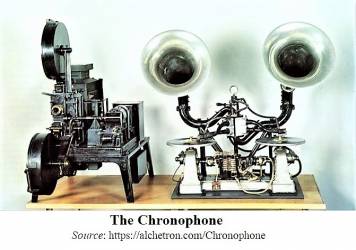
The Chronophone (photograph on the right) was invented by Léon Gaumont in 1902. The Chronophone brought sound indirectly to silent films for the first time by synchronizing the speed of two independent devices: the silent film projector and an auxiliary record player (gramophone). The Chronophone's control panel switched the two independent devices on simultaneously and ensured that the projector's speed in f.p.s. (frames per second) equalled the gramophone's r.p.m. (revolutions per minute).
The arcane trademark, "chronophone," may then have been Gaumont's contraction of the phrase, "chronometered gramophone," it being understood that the primary chronometer or "dominant time-keeper" in the set-up is the movie projector's f.p.s.
The presence of two gramophones in the photograph suggests that one played recorded voice and the other played music.
The Chronophone's first showing in the New England theater on Wednesday November 28 was a tremendous success. The customers left "highly gratified with the cinematograph that undoubtedly surpasses the former one to an extraordinary degree; the images are much cleaner, the reel flits less and the presentation is well-groomed" (ECG. November 29, 1906, page 2).
Brindis De Salas. El Correo Gallego of Saturday December 8 informed that Brindis de Salas (b. 1852, d. 1911) had arrived from A Coruña the day before to give two concerts at the New England pavilion on Monday.
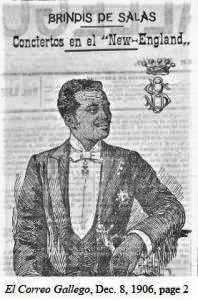
Brindis de Salas "was born in the Pearl of the Antilles [Cuba] where so many of our expatriots reside...He is tall, handsome, tan skin and exceedingly pleasant conversation and bearing...he did his studies endowed by the Spanish government."
The article describes him as a first-rate violinist invariably acclaimed by an audience. Then it transcribes some accolades the artist received from the press of A Coruña after his concert,
All the items of the program were executed marvelously by the eminent violinist. His admirable artistic personality manifested itself vigorously as he seemed to be indulging himself improvising difficult twists and turns throughout the various intricate compositions, enacting a wonderful boast of his mastery of the violin...The ovations of the audience lasted a long while...This particular skill of the Cuban violinist is really magnificent and perhaps unique: he plucks out of the chords of his instrument simultaneously the bass notes of a violoncello, the delicate arpeggios of a harp or the clear sharps of a flute. The illusion he concocts is complete. Anybody would venture to say that a harmonized orchestra is playing with one accord.
(El Correo Gallego. December 8, 1906, page 2)
"The renowned black violinist Mr. Brindis de Salas" gave two concerts in A Coruña; the first one at Teatro Circo under the auspices of the Sporting Club, and the second in the salon of Reunión de Artesanos,
Brindis de Salas confirmed the reputation that preceded him, and he can well own the legitimate presumption of being one of the world's foremost violinists today...The applause and ovations that the intelligent ones regaled him with were proof of his great worth.(Revista Gallega, December 9, 1906, page 4)
Note: Brindis de Salas was also an occasional composer (End of Note).
At the New England pavilion Brindis de Salas intervened in the second half of Monday's 6:00 PM session accompanied by a certain Mr. Brañas at the piano. The ticket prices for this session were 1 Peseta for a padded seat with armrest, 0.60 Pesetas for sitting on a bench, 0.30 Pesetas for general admission. He played three pieces,
The 9:00 PM concert portion covered the six numbers listed below. The ticket prices were 1.50 Pesetas for a padded seat with armrest, 1 Peseta for sitting on a bench, 0.40 Pesetas for general admission.
"This most notable violinist" performed "brilliantly" in front of a "distinguished and most numerous" audience. After each concert he was called repeatedly to the stage by an auditorium that applauded him enthusiastically (ECG. December 11, 1906, page 2).
Brindis de Salas left Ferrol on the 12th (ECG. December 12, 1906, page 2). The next scheduled stop of his first Galician tour was Lugo City. The recital began at 8:30 PM.
Given the brilliant reputation that preceded this American artist, it was natural to expect a full house, or nearly so, in the salon of Círculo de las Artes yesterday evening.But such was not the case, and the concert announced by us was witnessed by an auditorium much less than half full.
Yesterday Brindis de Salas fully evinced the just renown he enjoys.
He executed the eclectic program with delicacy and most delightful expression, overcoming all the mechanical difficulties with so singular a mastery as to provoke astonishment in the listeners, and prying out of the violin notes and vibrations so squared and peculiar that the public broke into prolonged and loud applause to the point where he was obliged to repeat most numbers.
Last night's musical vigil may be rated an artistic success. Mr. Martí the pianist of the society that hosted it deserves also a special mention; he demonstrated once more his deftness and artistic value.
(El Norte de Galicia, December 21, 1906, page 2)
The full houses, the rave reviews and the unbridled enthusiasm of concertgoers resumed for the rest of his first tour which ended in March 1907. He came back to Galicia for a second triumphant tour in August 1907. Let this quotation exemplify the praise he was consistently garnering,
Mr. Brindis de Salas the notable Cuban violinist visited this city in the first half of October, giving a concert at the Casino de Mondoñedo society.The evening picked by Mr. Brindis de Salas to present himself before the Mindonian public was one of those stormy nights. Despite the strong wind and the driving rain which made transiting the city streets intractable, the ample salon of the Casino was packed, the beautiful sex present in large numbers.
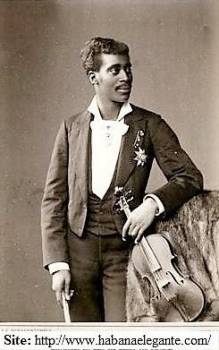
Such was the fame preceding the eminent violinist that the select audience, pooh-poohing the hurricane that swirled above their heads, turned up as never before to spend a few pleasant hours, delighting to hear the sweet and sonorous notes that exited from that piece of wood handled by so skilled an artist.
The clapping and the reprises by one and the other party were not lacking. The auditorium applauded the artist's efforts excitedly, deliriously, and he gratified it supremely with the gift of numbers absent from the program.
The hours passed by fugaciously and everybody ventured out of that vigil—a vigil that seemed to us very short—extremely pleased. We were so laid-back in that salon listening to Mr. Brindis de Salas!...
The press of this city eulogized the performance of so eminent an artist with absolute justice. He has departed for Vigo to make himself known in that capital.
May Mr. Brindis de Salas have a happy journey and may he not forget Mondoñedo where he has left behind very fond memories.
(Follas Novas, November 24, 1907, page 6)
On Wednesday December 12, 1906, the same day that Brindis de Salas left Ferrol after giving his two concerts at the New England pavilion, El Correo Gallego published this singular letter of the violinist "entreating" the editors of the newspaper to print it,
Mr. Director of EL CORREO GALLEGO,[Archaic greeting of the epoch]
I do not wish to part from this beautiful town, from which I take away the most delightful and indelible memories, without making public, by way of the Press, my heartfelt acknowledgement for the multiple and undeserved attentions I was made the object of by the sons of this noble and chivalrous city.
The name of Ferrol and its inhabitants will always go with me as settled proof of affection, even though I depart.
And I wish to make this my gratitude extensive to piano professor Mr. Eduardo Brañas who, with his vast knowledge of music, made my work on the violin easier, work so undeservedly sanctioned by the public with passionate applause and, where the Press of this comely city is concerned, with eulogies I am far from deserving.
A thousand thank-you's, distinguished Director, for inserting these lines, and...
[Archaic ending of the epoch]
Brindis de Salas.
Ferrol, December 12, 1906.
(El Correo Gallego. December 12, 1906, pages 1-2)
Brindis de Salas died in Buenos Aires in extreme poverty. Upon the news a Galician newspaper commented with bitter irony,
You no doubt remember Brindis de Salas, that magnificent black man, great violin player, who gave several concerts in Galicia. Brindis de Salas exerted himself wearing the colour of his skin; if Brindis de Salas had been a pale-faced towhead he would have been more fortunate, unquestionably.But it was not to be. The excellent musician has died destitute and forgotten.
He travelled the whole world over; he put together a few newspaper clippings and the memory of many ovations, and with that meagre treasure, ill, indigent, he left Spain for Buenos Aires...
His life flickered out miserably in a guest house of Paseo de Julio [today's Avenida Leandro N. Alem]. Then the people and the newspapers snatched his corpse and dedicated eulogies and speeches and articles. And they interred him solemnly.
Thus vanished the black Bohemian who was able by his art to make his name known to the whole world.
(El Regional: Diario de Lugo, July 3, 1911, page 2)
The customary yearly review of Almanaque de Ferrol dedicates the following paragraphs to the New England of 1907,
The expert actions of an intelligent Company have successfully melded the schooling of theater with the constraints of our ordinary means in the construction of the "New-England" pavilion, about which I find no serious qualm other than its name, exotic and inadequate.The tedious hours of our wintry afternoons and evenings glide by pleasantly in the spacious salon that brings Ferrolian society together to savour the charms of an almost intimate rendezvous spruced with the most attractive pastimes of the spirit.
I believe to have said on other occasions that theatrical seasons like last March's are almost indispensable in our times averse to reading or hearing hard-to-stomach, stern lessons of morality. They should be served to the public embellished with the allure of film projections, as the Ateneo's modern talks do.
I realize that many on reading this page will recall our contemporary theater's bawdinesses; but I maintain that these depend, for the most part, on an auditorium's tastes. Companies protect their interests first and so they select treats carefully in accordance with the diners' palate.
And leaving aside extreme views of white intransigence, perhaps as ridiculous and dangerous as those of red intransigence, there are works so wholesome and unblemished in our theatrical repertoire—as Hompanera's company has demonstrated—that it's even a cultural duty to assist in making them popular as much as possible because they, delighting the spirit and riveting the attention, preach with fictitious effects of living reality and inscribe teachings inaccessible to home or classroom, for both lack the laboratory embodied by the stage.
Iglesia [Church] Street's small theater, which compares very well with those of other cities more important than ours, fulfills this schooling mission, a very difficult mission here because Teatro Jofre is a very expensive University, though its academic posts are not adjudicated exclusively to the eminences whom, on the other hand, we would like to have a more frequent chance to applaud than we do today.
(Victorino Suanzes. Almanaque de Ferrol, Year 1908, pages 23-25)
On Saturday February 16 Hompanera's company made its debut at the New England. By this time the pavilion had sold sixty-one family season tickets (ECG. February 16, 1907, pages 1-2).
That day the acting company performed Echegaray's play, De Mala Raza, ("From Bad Stock") at 6:00 PM, and Guimerà's classic drama, Terra Baixa, ("Lowland") at 9:00 PM. This second play, written in the Catalan language, was almost immediately translated to Spanish and later to German ("Tiefland") English ("Marta of the Lowlands") and Italian ("Terra Bassa").
The debut of Hompanera Company garnered an "excellent" response and represented a "great triumph" (ECG. February 18, 1907, page 2). More customers rushed to buy season tickets.
The troupe produced many plays and sketches through the remainder of February and in the month of March. Special mention could be made of the comedy skit written by Abati and Reparaz in 1902, Los Hijos Artificiales (The Phony Sons). "The audience did not cease laughing for a single moment...the customers left very pleased with the spectacle and applauded all the actors warmly." Many people who did not see the show begged the reporter to ask the New England pavilion to "repeat that very funny show tomorrow afternoon" (ECG. February 28, 1907, page 2); and indeed it was reprised then and on March 11 to an equal reception.
The first show of Los Hijos Artificiales lasted longer than scheduled and delayed the start of the 9:00 PM theatrical session for about an hour, a happenstance that prompted the night audience to manifest its displeasure openly (ECG. February 28, 1907, page 2). This was the second lapse in the strict punctuality that had distinguished Hompanera's company from the start and had itself requested of its audience (ECG. February 21, 1907, page 2). The first lapse happened on Saturday February 23 when the troupe opened the 6:00 PM session half an hour behind schedule and concluded it too late for the public to dine out (ECG. February 25, 1907, page 1). The blunder was repeated on Tuesday March 5; Hompanera then promised the reporter that strict punctuality would be adhered to thenceforth.
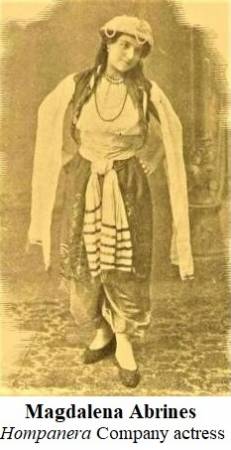
On Wednesday March 13 the troupe staged Bremón's new drama, El Poder De La Razón, (The Power of Reason). The play, set for 9:00 PM, apparently versed on "the resolution of the socialist problem via concordance between capital and labour" (ECG. March 13, 1907, page 2). Mr. Bremón himself was present at the New England as were José Borrás Vizoso the chief police inspector and Vicente Fernández Lopez the mayor. A "numerous group" of armchair customers showed its dislike by refusing to clap after the final act. One shouted, "No! No!" when another section of the auditorium called on Mr. Bremón to go up on the stage and take a bow. At this point the chief police inspector turned on the nonconformists using "abusive terms" and a ruckus followed. The incident might have had "serious consequences" but for the "very opportune" intervention of the mayor who sided with the nonconformists and defended their right to express their disapproval (ECG. March 14, 1907, page 2). The matter did not end there. The next day a committee of offended patrons asked Town Hall to inform the provincial governor of their complaint against the police inspector; the mayor complied immediately and the Corunnese governor requested the police inspector to present his defence in A Coruña (ECG. March 18, 1907, pages 1-2). Doubtlessly the governor referred the case to his superiors because on the night of Monday March 18 the state's governance minister telegraphed his final verdict; Mr. López resigned as mayor on Wednesday March 20 and Mr. Vizoso became Ferrol's new mayor on the 21st (ECG. March 20, 1907, page 2).
Owing to "the reiterated pleas of a large segment of the public" Hompanera Company postponed its departure and staged an intended eight additional sessions to start Tuesday April 2, after Holy Week. "Since daylight lasts longer now the sessions will commence at 8:30 PM sharp to enable Fleet personnel to return aboard without a hassle" (ECG. March 26, 1907, page 2). The number of sessions was in the end reduced to six (ECG. April 2, 1907, page 2). On Sunday April 7 an extra eighty chairs had to be brought in to accommodate the number of customers who showed up for the company's second last day. The last performance took place on Monday April 8. Curiously El Correo Gallego did not report on it.
On the afternoon of Friday April 12 the New England received from Paris the Gaumont-D cinematograph it had purchased (ECG. April 13, 1907, page 2). The film projector would not be ready to operate until two weeks later. Meantime the pavilion put on a provisional spectacle on the weekend of Saturday April 20. In the first of two acts a "daredevil and notable skater Mr. Tumilet" executed three routines named "The stairs of death," "Mazelike equilibria" and "Sensational race" and in the second act a folk group, Trío Aragonés, interpreted Aragonese dances. This entertainment program was repeated on Sunday and the artists departed on Monday.

The New England inserted the above advertisement on page 3 of the two Ferrolian newspapers in existence, El Correo Gallego and Diario Ferrolano, during the month of April. The ad invites retailers to purchase publicity space on the pavilion's fire curtain. The cost was 5 Pesetas per ½ square meter per month.
The New England reopened on Friday April 26 with two shows, 7:30 and 9:00 PM. The 9:00 PM shift appended a one-act stage comedy with actor and actress.
The same movies were shown at 7:30 and 9:00 PM. Their titles were:
Ticket prices for the 7:30 PM show were 0.50 Pesetas for a padded seat with armrest, 0.40 Pesetas for a seat on the first row of benches, 0.30 Pesetas for a seat on the benches behind, 0.20 Pesetas for general admission. Tickets for the 9:00 PM show were roughly 60% higher.
"All the films shown, some long, were applauded heavily and fêted by the public" (ECG. April 27, 1907, page 2).
Some silent films shown between April 27 and May 4 linger in cyberspace.
On May 10 the theaters New England and Jofre subscribed a contract to share the cost of hosting Montijano's company in a new theatrical season of ten shows scheduled to begin Thursday May 16. The peculiar arrangement was possible because the same Vicente Auboín Barcón who solicited the permit to build the New England subsequently entered and won the contest to rent Teatro Jofre from December 15, 1906, to November 30, 1907 (ECG. December 17, 1906, page 2). Note: The following year he lost the contest, deliberately one could say, to rent Teatro Jofre from December 5, 1907, to November 1, 1908 (End of Note).
The arrangement established a floor of presold season tickets whose individual cost was 14 Pesetas for a padded seat with armrest and 7.50 Pesetas for a seat on the first row of benches. The expense proved too high for most New England patrons, the target floor was not met and on May 16 the pavilion announced its rescission of the contract.
Montijano's company did in the end debut at the New England on Saturday October 5. The company staged the Spanish version of Gavault's and Charvay's play, Mademoiselle Josette, ma femme to a full house. This French comedy was adapted to the screen several times; here is the title song of one,
On Sunday October 6 the afternoon session and a new show registered another full house at the New England. The troupe moved across the street to Teatro Jofre for the night session and there too it performed before a full enthusiastic house (ECG. October 7, 1907, page 2).
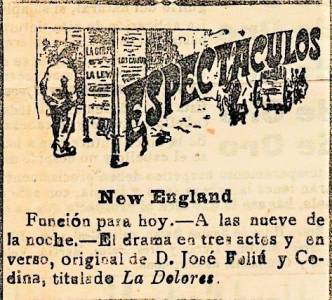
This novel arrangement between New England and Jofre did not require an issue of season tickets. The individual tickets for an afternoon session at the New England cost 1 Peseta for a padded seat with armrest, 0.60 Pesetas for a bench seat and 0.30 Pesetas for general admission. Tickets for a night session were roughly 60% higher. Customers had the option of purchasing all night sessions ahead of time for a lower price.
Montijano's company did its work in the New England mostly. Public acclaim followed public acclaim, and tickets for the padded seats with armrest and for bench seats were often sold out. El Correo Gallego of October 22 even returned mention of the New England to its front page and assigned a full column out of the page's six to the summary of a play scheduled for that night. The night was yet another "brilliant success" (ECG. October 23, 1907, page 2).
Surprisingly the only reported misbehaviour occurred at the posh theater across the street, Teatro Jofre. There on Sunday October 20 "the spectators in the stalls complained with reason about the municipal police's failure to curtail vigorously the tease of some spectators in the balconies who flung cigarette stubs, papers and even scraps of churros to the deck below" (ECG. October 21, 1907, page 2). The "scandal" hatched a second time on November 1 with the representation of Zorrilla's classic, Don Juan Tenorio. The newspaper criticized harshly the inability of Vizoso the mayor to end the continual annoyance which "a great proportion of the spectators must endure." Items hurled from the balconies to the stalls included "chestnuts, churros, cigarette stubs, eggs and various liquids" (ECG. November 2, 1907, page 2). On Sunday November 10 a "phenomenal scandal" during the representations brought about a premature curtain fall. The mayor's presence at the venue did not deter the rascals. "The public lamented over these incidents and considers that if things continue as they are it will have to renounce going to the theater" (ECG. November 11, 1907, page 2).
In the New England on Thursday October 24 Montijano's troupe staged the 1904 comedy, Jettatore!, of Argentinian playwright Gregorio de Laferrère.
A "distinguished public" went to watch the Argentinian comedy's debut. "The work's multiple comic situations and its clever dialogue's wholesome and refined humour were celebrated uproariously" (ECG. October 25, 1907, page 2).
Montijano's company bid farewell to Ferrol on Sunday November 10 with two shows in the New England at 3:30 and 5:30 PM, and a night show in Teatro Jofre across the street. A "numerous public" bid the troupe farewell, especially at 5:30 PM.
The pavilion next switched to Vivancos' zarzuela company. "This season in the pretty little theater promises to be dazzingly brilliant. The most select of our good society will assemble for the 6:00 PM vermouth sessions. We understand that Piña [a social club of Ferrol's establishment] has reserved more than a hundred padded seats with armrest" (ECG. November 14, 1907, page 2). The season began on the night of Saturday November 23.
The year ended as it had started, with accolades for the New England. "The public keeps favouring the small theater on Iglesia ["Church"] Street" (ECG. December 10, 1907, page 2). "The number of patrons was not as big as in previous days due to the unsettled weather" (ECG. December 12, 1907, page 2). "Good business day yesterday for the favoured little theater of Iglesia Street; every session drew a full house." On Sunday December 15 the box office for the 4:00 PM representation of Los Sobrinos del Capitán Grant ("Captain Grant's nephews") sold out, leaving about three hundred disappointed customers outside (ECG. December 16, 1907, page 2). The comedy-drama was reprised "with extraordinary success" at 5:45 PM Monday December 16.
Vivancos' troupe closed a "brilliant season" on Tuesday December 17. "Afternoon and evening shows were magnificent hits...the public bid an affectionate farewell to the company" (ECG. December 18, 1907, page 2).
New England spent the last week of 1907 offering movies and live dances. The "grandiose" short film of 1906, Los perros contrabandistas (The Smuggling Dogs"), "excited much interest." The dancers were a "renowned" Russian family named "Chérenieteff" and a trio named Charlús. "All sessions drew large crowds to the pavilion" (ECG. December 31, 1907, page 2).
The New England bounded with Iglesia ["Church"] Street to the north, the municipal jail to the east, the downtown gardens to the south and a short street then named Paseo de Suanzes to the west. Teatro Jofre stood on the opposite sidewalk of Paseo de Suanzes.
The customary yearly review of Almanaque de Ferrol dedicates the following paragraph to the New England of the year 1908,
The fortunate little theater New England next to Alameda de Suanzes continued [in the year 1908] as it continues [at the date of the writing, November 25, 1908] opening its doors daily to a throng of customers, favoured with widespread acceptance justly deserved for its adaptation, within the reach of the average wallet, to local partialities and tastes and for its accommodation to the feasible leisure hours of all social classes.(Anonymous. Almanaque de Ferrol, Year 1909, page 46)
The month of January brought marquises, generals, Piña [the social club of Ferrol's establishment] and distinguished members of society to the padded seats with armrest of the New England. The comic-dramatic company of Mr. Rodrigo entertained the auditorium during the whole month of January and the first half of February. The newspaper used the phrase, "select and numerous audience," many times. On Sunday January 26 the size of the crowd inside the pavilion reached "epic" proportions (ECG. January 27, 1908, page 2).
On Thursday January 30 the 1892 British farce, Charley's Aunt, filled the auditorium with constant laughter, as did every comedy that Rodrigo's company acted out,
Rodrigo's comic-dramatic company wrapped up its gig on Thursday February 13. "The magnificent theatrical season in the New England closed in splendid fashion...Yesterday the afternoon and evening patrons bid an affectionate farewell to the hard-working and delightful artists" (ECG. February 14, 1908, page 2). The article also congratulated the New England for "its precision and diligence in satisfying the public's wishes."
On Thursday March 12 the pavilion collated movie shows with live performances of a magician, Doctor Posadas, and of acrobats, the Koker brothers. Regarding movies, patrons found these three particularly enthralling,
Regarding Doctor Posadas, his "Carrier Pigeon" trick was highly admired. The day's two sessions, 6:00 and 9:15 PM, registered a full house (ECG. March 13, 1908, page 3).
Doctor Posadas and the Koker brothers wound up their contract on Wednesday March 25; the three sessions, 4:00, 6:00 and 9:15 PM, were sold out. "The notable doctor Posadas was greatly applauded during his routine" (ECG. March 26, 1908, page 2).
On April 5 the last movie shown at the pavilion ahead of Holy Week was The Passion and Death of Christ, a feature film of 1903. "Yesterday all the cinematograph sessions logged a full house" (ECG. April 6, 1908, page 2). The New England closed its doors and did not reopen until Saturday April 18 with more movie shows and cheaper! tickets.
On Thursday May 7 the New England collated movie shows with live routines. The first routine was an electric doll operated by "Zoraida the delightful Muslim woman," and the second routine belonged to a quick-change artist named Rafael Arcos.
On Friday May 8 Rafael Arcos presented a sketch named "Moulin Rouge" in which he disguised himself as a female tobacconist and as a magician; next he assumed multiple personalities in skits entitled, "La Jolie comedie," "Un tenore leggero" and "Sra. de Rodríguez"; finally he impersonated nine celebrities consecutively: Loubet, Victor Hugo, Zorrilla, Benavente, Maura, Romanones, Echegaray, Pí Margall and Curros Enríquez (ordered from left to right below).

The newspaper praised Rafael Arcos every day. "A notable quick-change artist" (ECG. May 12, 1908, page 2); "he had to improvise an extra routine owing to the loud rounds of applause he received"; "he is an excellent artist" (May 14) "most notable" (May 16) "celebrated" (May 18) "skilled"; "did a very meritorious job"; "the Company presented him with a gold watch" (May 19). His last day was Monday May 18, he departed for Havana under contract.
The comic-dramatic company Tressols came next and performed Sunday May 31 through Sunday June 7. The newspaper employed the hackneyed phrases, "numerous public...select audience...heavy applause," to describe the patrons' reaction to this troupe's production, yet one can infer that a little less enthusiasm surrounded Tressols' stopover because, although it introduced lavish attire and plush backdrops in its representations, part of its repertoire had already been essayed by foregoing companies Hompanera, Montijano, Vivancos and Rodrigo. After Tressols' departure the New England shut down for a protracted break.
On Saturday August 8, after a two-month hiatus, the newspaper again took up news of the New England and announced that between August 15-18 the "pretty theater" would reopen with cinematograph sessions and varietés. The booked acts were a British female troupe and a French female dancer,
The British troupe, The Canadians, will debut first, on the 17th. Although another company used the same name in Teatro Jofre [on Wednesday August 8, 1906] the company coming to the New England is the original troupe.It is made up of six gorgeous misses who execute British military drills and dances.
They debuted three months ago in two Madrid theaters, Circo de Parish and Príncipe Alfonso, and the event was a grand affair.
They are currently performing in Lisbon's Teatro Principal. On the 12th they will board the Royal Mail Line and sail to Vigo and Ferrol.
The terrific French dancer Mlle. Liliane has also been booked. She made her debut in Príncipe Alfonso two months ago and has enjoyed continued success since.
(El Correo Gallego. August 8, 1908, page 2)
The New England reopened on Monday August 17 with three identical sessions, 7:00, 9:30 and 10:30 PM. As usual the blend of the cinematograph and varieté portions constituted a session.
It is nearly always a challenge to pry from a disjoint Spanish title the genuine cinematograph. An attempt was made to identify the seven films of August 17; the effort yielded a mere two candidates,
"The charming theater's inauguration of a new season was a success." The Canadians were absent, "doubtlessly owing to the holdup of the steamship taking them from Lisbon to La Coruña" (ECG. August 18, 1908, page 2).
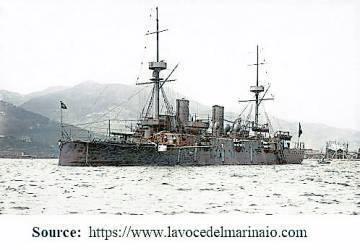
On Saturday August 22 Mlle. Liliane debuted before packed sessions, indeed a full house was the norm during her entire gig.
The Canadians never showed up.
On Saturday September 12 the pavilion honoured the officers and crew of the visiting Italian cruiser Etna (photograph to the right) with a gala session at 7:00 PM. A musical sextet, the projection of seven films and the debut of Celestino Augusto "renowned bird-call imitator" comprised the tripartite show. All the tickets were sold out (ECG. September 14, 1908, page 2).
On Tuesday September 15 the New England shut down for repair work until Saturday October 3 when Montijano's company returned for a second year.
Montijano's troupe performed from October 3 to Sunday November 8 and reaped another triumphal season like that of 1907. "The season of forty shows that the company of Mr. Montijano has delivered at this theater has been exceedingly brilliant in every concept. The representations were tallied as full houses. Yesterday the company's farewell session of the afternoon logged an impressively full house and in the night session many people failed to get inside as all the available tickets were sold" (ECG. November 9, 1908, page 2).
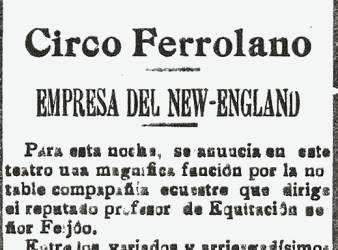
It is fair to say that at this juncture the New England had eclipsed every other competitor including Teatro Jofre in terms of attendance and popularity. The cash flow was so good that the pavilion rented the arena of a competitor, Circo Ferrolano, to present the "international" and multi-faceted circus of Secundino Feijóo. The circus brought horses, acrobats, gymnasts, dancers, runners, a "Dragon Man," the "Troupe Impérial Chinoise," an "aerial pedestrian," buffoons and Cheret the "popular fool."
Feijóo's circus debuted November 11, all tickets sold. "The company is without exaggeration among the best that have ever performed in Ferrol" (ECG. November 12, 1908, page 2).
The three weekend functions of November 14-15 had a massive affluence of customers. Many people were unable to get in and some left outdoors protested, but the New England stuck to the policy of not letting more people inside than the maximum allowed, and this to avert inconveniencing the customers already admitted.
The weekend functions of November 21-22 exhibited "three colossal full houses."
Mr. Feijóo's notable company is liked more and more each day, and the artists garner constant clapping for the extremely difficult and risky exercises. The Aragón brothers, the great Leopoldo, Mlle. Juliette's balancing act, the celebrated fool Cheret have gained the favour of the crowd, which applauds them without pause [...] Several gentlemen entreat us to have the company install a safety net for the great Leopoldo's routine in order to obviate a fatal mishap.(El Correo Gallego. November 23, 1908, page 2)
The weekend functions of November 28-29 saw a slight drop in the volume of customers and apparently the final day of performances was Tuesday December 1.
The New England dedicated part of the revenue it earned at Circo Ferrolano to a reduction in the ticket prices at the pavilion. The three cinematograph sessions of Saturday December 19, 6:00, 7:00 and 9:30 PM, posted these: 0.40 Pesetas for a padded seat with armrest, 0.25 Pesetas for sitting on a bench, 0.15 Pesetas for general admission (ECG. December 19, 1908, page 2).
The disastrous blow to the Spanish Navy in 1898 during the Spanish-American War forced Spain to choose between renouncing its dream of ever becoming a naval superpower again or pursuing it by building a large modern fleet on an initial budget of 180,000,000 Pesetas.
On January 7, 1908, the Spanish government published the Law of the (new) Fleet. The law triggered the official government solicitation of April 21, 1908, requesting bids by private Spanish or foreign enterprises to "rent" under obligations the arsenals of Cartagena and Ferrol. The original obligations for the case of Ferrol were (a) to build three cruisers of 15,000 tons displacement each, fully armed, (b) to construct one new stocks for large ships and provide cranes, (c) to construct a wharf with railway access, (d) to build a blacksmiths workshop equipped with the latest tools, (e) to fulfill several other demands including the construction of a dry dock for large vessels and the completion of a power station.
On August 21, 1908, the solicitation process terminated at 3:00 PM and the received bids were made public, all were sponsored by Spanish "shareholders." The first bidder was a French consortium headed by the firm, Forges et Chantiers. The second bidder was the Italian firm, Ansaldo. The third was an Asturian venture in association with William Beardmore & Co. The last bidder was the British conglomerate Vickers-Armstrong, composed of the companies Sir W. G. Armstrong Whitworth & Co. Ltd., Vickers Sons & Maxim Ltd. and John Brown & Co. Ltd. (ECG. Sunday March 21, 1909, page 4, special issue). The Spanish sponsor of this fourth bid was Sociedad Española de Construcción Naval. La Constructora, as it was later dubbed by Ferrolians, had been constituted on August 18, 1908, and enlisted five metallugy manufacturing firms, two shipping companies, nine banks and a credit union.
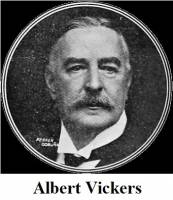
On February 5, 1909, the Official Bulletin of the Ministry for the Navy published a circular notifying the provisional adjudication of the government contract to the conglomerate Vickers-Armstrong.
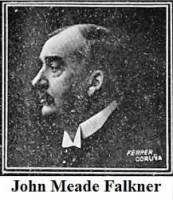
At this time Albert Vickers (photograph to the left) was the chairman of Vickers Sons & Maxim Ltd. and John M. Falkner (photograph on the right) was the chairman of Sir W. G. Armstrong Whitworth & Co. Ltd. The two photographs come from page 7 of the bulletin, Acorazado España, printed by El Correo Gallego to mark the launch on February 5, 1912, of the first cruiser following the British takeover of the technical and administrative operation of the Arsenal.
The comparatively minor component of the British triad, John Brown & Co. Ltd., had two directors, Charles E. Ellis and John Sampson.
On Saturday March 20, 1909, the joyous news of the definitive adjudication of the contract to Vickers-Armstrong arrived to Ferrol via urgent telegraph sent that day from Madrid at 9:15 AM and received in the offices of El Correo Gallego at 10:30 AM.
The March 22 number of El Correo Gallego, whose front-page's mast-head, headline and subtitle are reproduced beneath, informed that Mr. A. J. Campbell, Head of the Works Department at the Vickers Barrow-in-Furness yard, would assume the similar post in Ferrol and that Mr. Peter Muir would be Assistant Head. Many other British professionals from the breadth of the industry had signed 7-year contracts and would take charge of the various workshops in Ferrol. "John Brown & Co. Ltd. will build a turbines workshop in Ferrol with a price tag of 1,000,000 Pesetas," the newspaper stated.
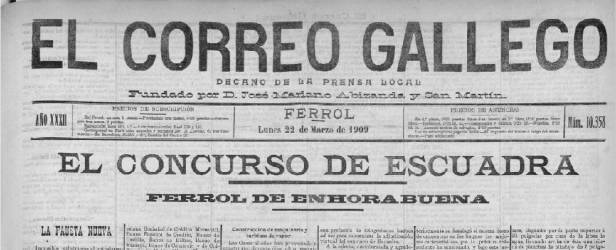
The March 22 number of El Correo Gallego relates that when news of the definitive adjudication of the contract arrived to Ferrol,
All faces reflected a vibrant, profound, intense inner satisfaction, legitimate expression of the pleasure roused in all souls by a return to a working life after a protracted period of hardships and misery with disastrous consequences alas! for many homes.Retailers, industrialists, landlords, workers: all the elements that give life to our people expressed, full of ardent enthusiasm, the immense joy they felt upon news of immediate prosperity.
Proper are these popular displays and moreover amply justified in a people who, like ours, was born underneath the shade of our splendid and envied naval factory and who solely depends on it to stay alive.
(El Correo Gallego. March 22, 1909, page 2)
Notes: Mr. A. J. Campbell's literal job title was "Director of Naval Construction under the Commission responsible for the building of the new Spanish fleet" (The Shipbuilder, Vol. 4, Years 1909-1910, page 18, ed. A. G. Hood). The same volume asserts on page 41 that "Mr. Campbell has considerable experience in Spain and speaks the language fluently. It is understood that he will have as his assistant Mr. Peter Muir, who has just returned from Russia" (End of Notes).

The provisional adjudication of the government contract to Vickers-Armstrong on February 5, 1909, ended the longstanding uncertainty surrounding the contest for the "new fleet." No doubt Ferrol's military and political elite knew well ahead of time that the solicitation would not be declared null, i.e., without acceptable bids. Propriety dictated they should be discreet, and they were.
The start of the year 1909 saw feverish activity in the entertainment offer of Teatro Jofre, the posh theater of Ferrol's elite. The elitist theater adopted the entertaiment format of the pavilion it faced across the street, The melding of varietés and cinematograph sessions proved to be a resounding success,
Yesterday's functions logged full houses in the afternoon and an overfill at night, a total triumph of the participating artists.The most original Lolé and Lolé received thunderous and prolonged ovations and took several curtain calls requested by an auditorium that did not stop clapping; after each call they improvised a comic skit thath was as much of a hit as the previous ones and which elicited general guffaws.
[...]
Many and gorgeous movie reels were shown in every session, every one hailed and some applauded, such as ... Mi pantalón está descosido.
Although we have already had occasion to emit our judgement concerning the handsome apparatus and its flawless operation, we cannot but remark that a great proportion of customers who frequent Teatro Jofre do so lured by the excellent features of the cinematograph and by the incredibly varied and wide-ranging picture shows, and the proof of our assertion is the great affluence of public to movies-only sessions where a veritable splurge of reels was made; yesterday alone twenty-five new pictures were exhibited in the different sessions.
(El Correo Gallego. January 2, 1909, page 2)
On New Year's Day, 1909, the New England too had "grand" full houses.
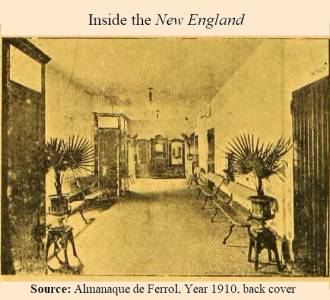
There were six sessions in the pavilion that day, 3:00, 4:00, 5:00, 6:00, 9:00 and 10:00 PM. The afternoon tickets remained cheap, 0.40 Pesetas for a padded seat with armrest, 0.25 Pesetas for sitting on a bench, 0.15 Pesetas for general admission. Evening tickets cost just a wee bit more, 0.50 Pesetas for a padded seat with armrest, 0.30 Pesetas for sitting on a bench, 0.20 Pesetas for general admission.
However it was obvious that in an "entertainment war of attrition" Teatro Jofre owned a bulky wallet and would eventually outdo the pavilion. For one, all the seats in the posh theater were padded, "very comfortable," said the newspaper, whereas the benches of the New England were hard benches indeed (photograph to the right).
On Saturday January 9 the report was that more and more people were coming to the pavilion to watch the performance of travesti Ernesto Foliers who imitated famous female celebrities of the day and who mimicked their gestures, movement and voice "marvelously." "Whoever sees him perform falls under the illusion that a woman is really on the stage" (ECG. January 9, 1909, page 2).
On Sunday January 10 the afternoon sessions were full houses and "numerous public" attended in the evening. Foliers reaped thunderous applause and the audience requested him to repeat several numbers. Monday was Foliers' final day; he danced to the beat of the Machicha.
Two months after its first triumphal visit Feijóo's circus returned on Tuesday January 12 to Circo Ferrolano for a brief 3-day engagement under the aegis of New England. The three days registered full houses, and to compliment the great affluence of customers despite the foul weather, Feijóo and New England decided to add one special function at 9:00 PM on Friday January 15 featuring Sadakazu Uyenishi alias Raku, a Japanese jiu-jitsu master who was offering a reward of 500 Pesetas to whoever could beat him in a fight. Friday's special function was an "enormous, colossal hit,"
Distinguished families filled the loges and the deck's padded seats. General admission brimmed with people eager to see whether everything that had been said about Raku was indeed true. Their expectations did not founder because this small thin man is unquestionably an athlete with the nimbleness of a tiger.[...]
Raku's presentation, awaited by the public with genuine emotion, was the thrill of the night. A salvo of thunderous prolonged clapping greeted his appearance on the canvas.
The renowned jiu-jitsu champion is young, thin, of average height and pleasant demeanour. All his moves reveal great agility and skill.
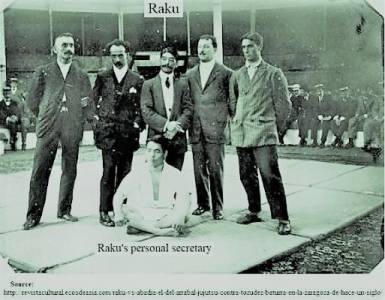
His personal secretary, a robust and stout Japanese man, initiated the skirmishes. From the start the immense crowd that filled the entire Circo focussed its attention intently on the dexterous fighter.
Raku's agility, skill, talent, swiftness and precision during his warm-up routine were admirable...Raku's secretary used dagger, stick, cudgel and various other weapons in his lunges at Raku...
[...]
Following Raku's scuffles with his secretary there entered the arena a young man surnamed Rodríguez who notified beforehand his waiver of the 500-Pesetas reward being offered by Raku. Rodríguez hailed from Marmancón and had the local reputation of being a strong lad. From the duel's first moments the supreme ease with which Raku overpowered and defeated his adversary became evident, playing with him—let the simile stand—as the cat plays with the little mouse. The duel lasted three minutes and a few seconds, then the hardy young man banged the floor three times as a sign of surrender.
[...]
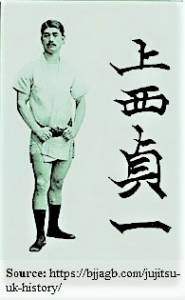
Toward the end of his act Raku invited the six strongest men in the audience to come and press down hard on the two ends of a long rod beneath whose middle he would lie, neck pressed against the wood. Raku lay down and withstood that formidable pressure nonchalantly. Then with swift moves of incomparable suppleness and prowess the famous champion disencumbered himself of that strip of wood which seemed to have left him lifeless on the canvas. Most of the audience rose to their feet and cheered the famed champion.
Without any sort of doubt last night the public left Circo highly gratified, praising the Japanese fighter unreservedly...
This afternoon two sturdy young men from La Coruña will arrive on one of the steamships; they are notorious in the nearby city for their strength and they come solely with the aim of grappling with Raku. One is nicknamed "Tan" and the other, whose name is Manuel Brandariz, has grappled with Raku several times.
The contest will be extremely interesting and packed with emotion.
Tonight's function will commence at 9:00 PM sharp.
[...]
We congratulate the New England Company and are certain of another colossal full house like last night's.
(El Correo Gallego. January 16, 1909, page 2)
The British troupe, The Canadians, who had been expected to debut at the New England on August 17, 1908, finally showed up...on Saturday January 23, 1909, at Teatro Jofre across the street! Monday's newspaper dedicated a considerable portion of pages 1-2 to praise the female British troupe to the skies, to extol the posh theater's untiring toil to bring so many "varietés" to Ferrol in so short a time and to expound at length on the merits of the next scheduled star. It is fair to say that at this juncture Teatro Jofre had taken over the lead in terms of attendance and popularity and had every reason to keep it; nevertheless feisty New England did not throw in the towel.
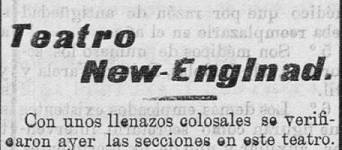
The photograph on the left shows an unpardonable (possibly deliberate) typesetting error made by El Correo Gallego in the header to its regular news column about the New England. The misspelling appeared for the first time on Wednesday January 20 and persisted during more than three weeks until Friday February 12!
How could such an oversight go unnoticed for so long? Might this have been an overreach by Teatro Jofre or the small act of revenge by a disgruntled typesetter or a misdemeanor induced by some important personage ill-disposed toward the pavilion? Throughout those three weeks the pavilion more than held its own, full houses were not unusual. For example, on Sunday February 7 the affluence of customers was "colossal" again and the box office had to hang the sign of no more tickets available (ECG. February 8, 1909, page 2).
The winter season of the small New England theater ended a month later than Teatro Jofre's. The pavilion enjoyed a great affluence of customers throughout. On Wednesday March 3 Mr. Balmaña's company closed the theatrical season and bade farewell before a "distinguished and numerous house" (ECG. March 4, 1909, page 2). The company's most popular piece had been the operetta, Alma de Dios, which the patrons of the New England petitioned the troupe to represent six times.
The theater closed down and did not reopen until Holy Week's Saturday April 10. The newspaper broadly ignored the pavilion from April 10 to May 29.
In the afternoon of Tuesday May 11 Vickers engineers Mr. Campbell, Mr. Ow (sic) and Mr. Spieis (sic) arrived to Ferrol and got their first impression of the dockyard. On Saturday May 15 Mr. Campbell travelled to Madrid and was not expected back until the month of June. Meanwhile Mr. Ow was assigned the task of tallying the machines and supplements needed for revamping the Arsenal (ECG. May 17, 1909, page 2).
The pavilion began its second lyrical season on Saturday May 29 at 9:15 PM with the debut of a comic-lyrical company headed by Mr. Aparicio and Mr. González. The "little theater" also hired a recently constituted professorial orchestra, "Orquesta de Ferrol," to provide the musical accompaniment. A month prior the posh theater across the street had blamed this very orchestra's "imprudent" "irrational" fees for the cancellation of its lyrical season, and in a bitter communiqué even presaged the end of all lyrical seasons in the city (ECG. April 19, 1909, page 2). Now everyone saw that New England's management upstaged Teatro Jofre's. Did it attest a better knack for doing business? For inevitably the pavilion was obliged to raise prices substantially, 2 Pesetas for a padded seat with armrest, 0.80 Pesetas for sitting on a bench, 0.45 Pesetas for general admission, and for the first time the municipal entertainment tax was tacked on the customer's wallet.
At this time the newspaper dropped its coverage of functions at the New England radically. The only reference to the novel lyrical season was June 4 and the report indicates that the pavilion had not blundered,
Yesterday's afternoon and evening sessions at the New England theater were very handsome, and the proficient artists, seconded with acumen by the orchestra, garnered loud rounds of applause.(El Correo Gallego. June 4, 1909, page 2)
In the afternoon of Friday June 11 Vickers engineer Mr. Campbell returned to Ferrol accompanied by fellow engineer Mr. Morilorengli (sic). "The British personnel hired to work at this naval factory will arrive next week" (ECG. June 12, 1909, page 2). On June 15 seven office clerks or managers did so: Mr. R. S. Campbell, Mr. J. Robinson, Mr. W. Mouro, Mr. S. Miller, Mr. J. Gillies, Mr. Gregson and Mr. Matthewson (ECG. June 16, 1909, page 2).
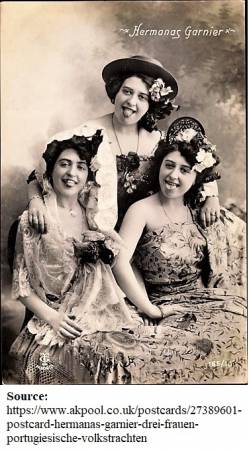
The next newspaper reference to functions at the New England tarried until Monday July 5,
This theater will probably reopen its doors the day after tomorrow with varieté and cinematograph sessions...the "Talking Dog," a sensational act, has been booked...the cinematograph reels, brand new, are the latest novelties from Pathé house of Paris.A select sextet will liven up the shows.
(El Correo Gallego. July 5, 1909, page 2)
Presently the newspaper informed every day about the New England for about a week. "The most distinguished segment of Ferrolian society filled the available seats completely" (ECG. July 8, 1909, page 2). "The varieté functions continue to be tallied as full houses" (July 9). "The gorgeous dancers named Hermanas Garnier (photograph to the right) will debut tonight" (July 12). "The Company had a great hit yesterday...the numerous audience did not cease applauding the notable artists...the public requested Hermanas Garnier to repeat several of their dances" (July 13). "The shows at this theater continue drawing big crowds" (July 14).
Then the reporting ceased abruptly. Nevertheless it can be confidently stated that whenever "the charming and favoured New England pavilion" (ADF. Year 1910, page 61) opened its doors it drew a sizeable crowd of customers, sometimes even in foul weather.
Meanwhile the official handover of the shipyard to British management took place on July 15. Leading up to it about 170 men applied for employment in the new Arsenals (ECG. July 14, 1909, page 2). On August 5 several foundry apprentices were employed; meantime all workers' salaries were rising gradually. "Twenty-six operators and five apprentices will start working today at the Carpentry Workshop" (August 26). "Thirty-two carpenters and ten apprentices were hired yesterday" (September 15). "Since July 15, date when this Arsenal was transferred to Sociedad Española de Construcción Naval, there were hired three hundred operators of various trades" (September 28). The shipyard was expected to recruit 3,000 workers after construction of the first cruiser got underway.
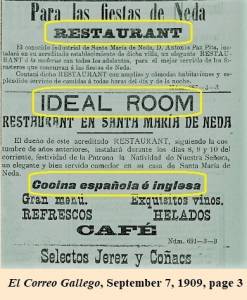
On July 24 a workingmen's union held a meeting in the New England theater to move the expulsion of any worker who accepted the payment procedure established by the new shipyard management. The conflict was tentatively resolved on July 30; workers would retrieve their weekly wage Saturday afternoons.
Mr. Albert Brooks the British engineer tasked with directing the construction of the new 20,000-tonne dry dock arrived in the city on August 18, as did additional British staff. "An excellent steam-powered crane for hauling materials is functioning since yesterday near the site of the future dry dock...several foundry operators were awarded a pay hike" (August 31).
On September 6 the factory designated sixteen days of the year as statutory holidays although "special circumstances" could dictate a waiver and make work compulsory. More raises for foundry personnel on September 13. "Yesterday several foremen and some forges, machinery, foundry and assembly workshop operators were recompensed with raises" (September 17).
The workers involved in the construction of the 20,000-tonne dry dock went on strike in the afternoon of Monday September 20 to seek the reinstatement of two workers "unjustly" dismissed that morning and to demand a minimum wage of 3 Pesetas/day. The strike ended October 5, their demands fully satisfied.
A second steam-powered crane had been installed by October 9.
The activity in all the workshops and the very heavy toil involved in the construction of the large dry dock of 20,000 tonnes give the semblance of a big manufacturing enterprise to the factory. Englishmen and Spaniards united share the constant daily labour under the prime direction of their instructors and of the illustrious engineers misters Campbell, Spiers, Rechea [Spaniard], Black, Muir, Brooks and Prehsors (sic).(El Correo Gallego. October 21, 1909, page 2)
On November 23 more British personnel arrived to take up their posts in the Arsenal's foundry.
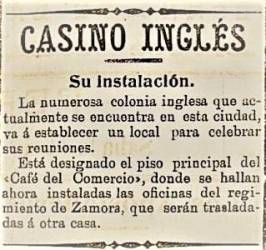
Both the New England theater and Teatro Jofre started their winter season late, a circumstance bemoaned by Leandro de Saralegui y Medina on page 61 of Almanaque de Ferrol, Year 1910, for the unsettled weather of autumn had come early that year and neither theater had yet opened its doors to the public.
Teatro Jofre failed to contract a lyrical company and opened with varietés plus cinematograph sessions on Saturday November 6.
New England booked Rodrigo's comic-dramatic company anew (see Chapter 3) and opened its winter season three weeks later on Saturday November 27. Tickets for a "simple session" cost 0.60 Pesetas for a padded seat with armrest, 0.35 Pesetas for sitting on a bench and 0.15 Pesetas for the "stocks" section (novel nomenclature!). The prices for a "double session" were 1.50 Pesetas for a padded seat with armrest, 0.75 Pesetas for sitting on a bench and 0.40 Pesetas for the "stocks." The customer also had to foot the entertainment tax imposed by Town Hall. Regarding these higher prices, it must be remembered that the British administration of the dockyard was improving the lot of many Ferrolian families continually, that the wages of efficient workers were rising steadily and that the naval factory was immersed in a long-drawn recruitment drive.
Once more the "elegant theater" had upstaged the ritzy one. On November 27, "big crowd...the management may well be pleased with the triumph achieved...the most disguished members of society filled the section of padded seats in both sessions; the benches and the stocks were sold out...Orquesta de Ferrol livened the intermissions" (ECG. November 29, 1909, pages 1-2). On Sunday November 28, "if there had been enthusiasm for going to the New England the previous day, yesterday's was undescribable...four sessions at 3:30, 4:30, 6:00 and 9:30 PM...for this last one all tickets were gone by early evening and many people could not get in...the company [i.e. Rodrigo's] and the Company [i.e. New England] had great success and we forecast a great season for both" (Ibid., page 2).
On November 30 and December 5 Rodrigo's company staged Alexandre Bisson's vaudeville, "La Famille Pont-Biquet" (The Pont-Biquet Family).
On days of "incessant" rain the attendance was modest (December 2). The weekend sessions of December 4-5 were full houses again. The final day of Rodrigo's company was Thursday December 16. Overall the persistent bad weather, a normal trait of Ferrolian winters, impacted attendance numbers considerably.
Casino Inglés was inaugurated on Christmas Day. This was the main meeting place of the English colony. Located roughly halfway between the downtown gardens and Town Hall, it took over the whole floor formerly taken up by the main offices of the Zamora Regiment (see Introduction) which it displaced. The Casino Inglés was completely refurbished to provide a comfortable ambience. It also offered a buffet service.
On New Year's Eve the English colony arranged a ball at...at...the New England pavilion perhaps? No, at Teatro Jofre.
On January 1 a brand new soccer team, named Shipbuilding, composed of young British employees of the dockyard, together with many local soccer fans, boarded the steamship Amboage bound for A Coruña in order to play that city's Real Club Deportivo. They were welcomed "affectionately" upon arrival and were fêted until 12:00 midnight. On Sunday morning the British contingent paid a visit to the tomb of Sir John Moore and left "extremely gratified."
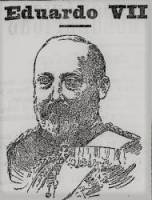
The match was played in the afternoon, starting time 3:30 PM. Presiding the event were the British consul of A Coruña, the viceconsul, a representative of the Captain-general, the Navy commander of A Coruña, the president of the Corunnese soccer club and Mr. Vickers the director of Sociedad Española de Construcción Naval. A military brass band interpreted the two national anthems, Marcha Real and God Save the King, before the start of the game. At the first half whistle the score was drawn 2-2. During the second half the wind favoured Real Club Deportivo, the team scored three goals and the match finished 5-2 in favour of the locals.
In short: a very agreeable fiesta and gorgeous weather.Before boarding the steamship Amboage for the return voyage the players were complimented with a splendid refreshment at the Gymnasium.
Upon arriving to Ferrol we have perceived that the British bring back a very good impression of Real Club Deportivo, that they wish to see these excursions happen frequently and to soon have the opportunity of inviting Deportivo to come play in Ferrol.
(El Correo Gallego. January 5, 1910, page 2)
According to La Correspondencia Gallega, January 1, 1910, page 1, the Shipbuilding lineup of that first encounter was: S. Campbell, Wickers, Johnson, Jankin, R. Campbell, Butcher, Molley, Clark, Pratt, Hardie and A. F. Campbell.
In other news, El Correo Gallego of January 17 informed that every office and workshop in the shipyard had been equipped with a telephone line.
A zarzuela company directed by Mr. Martí's debuted at the New England theater on Sunday January 23 in front of a full house. Despite persistent inclement weather the subsequent attendance numbers ranged from good to "magnificent." The stormy winter made the news more than once. "Last night heavy showers and hurricane-force gusts followed one another continually and at times awed...many rooves were damaged" (ECG. January 28, 1910, page 2).
The functions scheduled for Monday February 7 had to be cancelled because the roof leaked. The cracks were repaired hastily and Martí's company enjoyed a long run until Saturday March 19 when it paused to observe the Holy Week of 1910. Their performances resumed on Saturday March 26 and the company said good-bye shortly afterward on Tuesday March 29. The two functions of their last Sunday in Ferrol were "colossal full houses."
Teatro Jofre "faded away" on February 25 when the local power company pronounced the electric installation unsafe and locked down the venue. On July 10 the society running the dormant theater dissolved itself and the property was donated to the Hospital of Charity. The hospital bankrolled a new electrical installation.
On February 19 Royal Navy cruiser H.M.S. Donegal dropped anchor in the harbour at 9:00 AM. German cruiser S.M.S. Victoria Louise moored the next day and S.M.S. Hansa joined both on the 24th.
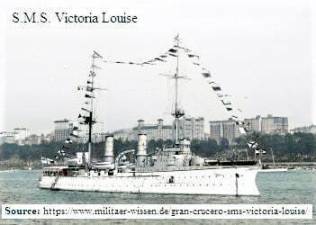
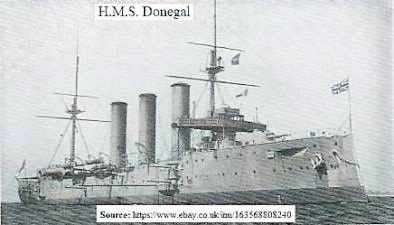
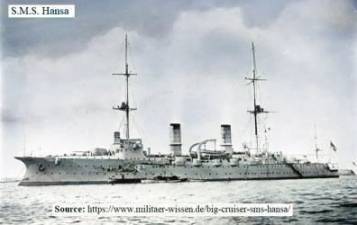
Ernest Warmke, a coal trimmer aboard S.M.S. Hansa, died of heart disease in the morning of February 28. He was twenty-three years old, a native son of Rostok.
Since he professed the Protestant religion his corpse was driven to the civilian cemetery today at 11:00 AM.The crew of the vessel memorialized him with a precious one-meter-diameter wreath of natural flowers.
(El Correo Gallego. March 1, 1910, page 1)
H.M.S. Donegal sailed away on February 26 bound for Devonport, S.M.S. Victoria Louise departed on March 3, and S.M.S. Hansa left port on March 10 en route to Germany.
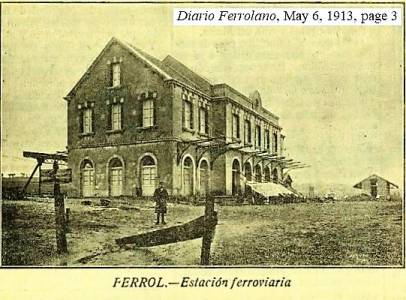
All three vessels survived the First World War.
On Monday March 28 the English wing of the British colony played a soccer match versus the Scottish wing. Kickoff time was 5:00 PM. The "pitch" was a grassy field that would be available until September 20 when it was declared off-limits as work started on laying down tracks and building the railway station (photograph on the right).
For England played Stainton, Preston, Rowe, Johnston, Charley, Vickers, Marshall, Robson, Bacon, Bettinson and Butterfield.
Note: "Vickers" was probably the same player as "Wickers" in the January 1 lineup supplied by La Correspondencia Gallega (End of Note).
For Scotland played McGregor, Smith, Swaney, Clark, Shearer, Gillis, Milloy, Campbell, Gowan, Wilson and Stewart (ECG. March 28, 1910, page 2).
Note: I have taken the liberty of modifying the newspaper rendition of four Scottish surnames: "Gregor" (newspaper) → McGregor, "Swerney" → Swaney, "Gillies" → Gillis and "Goant" → Gowan (End of Note).
On Sunday April 24 many people gathered in the harbour to greet the Real Club Deportivo squad, their fans and families—in all more than two hundred passengers who debarked steamship Amboage at 12:00 noon. The welcome was "very affectionate." The match between Shipbuilding Football Club and Deportivo began at 4:00 PM. It was watched by a very big crowd. At halftime Shipbuilding led 3-2. The final score was 6-3 in favour of the locals.
The Corunnese were invited to a splendid and affectionate lunch at the English Club [i.e. Casino Inglés]...When the time came for the return voyage they were accompanied to the harbour and bidden a most affectionate farewell.The Corunnese excursionists charge us to express publicly their sincere gratitude and a thousand thank-you's to the whole British colony for the affectionate hospitality they dispensed.
Probably next Sunday the same British team will go to La Coruña for a return friendly and it's almost certain that, if the weather holds, an extraordinary voyage will be chartered to enable the entire British colony and many football fans to witness the reprise of so interesting a match.
(El Correo Gallego. April 25, 1910, page 2)
The team's name, "Shipbuilding," was soon changed to "Reina Victoria."
After the zarzuela company directed by Martí said good-bye on Tuesday March 29 El Correo Gallego did not report any activity at the New England until October 13, a lapse of six and a half months. On that day the newspaper advised its readers about a variety show slated for Saturday October 15.
It would appear that the pavilion had remained closed to the public over six and a half months.
There is reason to suppose that the leaky roof of Monday February 7 was a minor component of extensive damage wreaked on the pavilion by the driving rain and fierce winds of the first three months of 1910, and that the repairs called for were painstakingly slow, lengthy and cost a great deal of money.
This contention is buttressed by the exorbitant prices charged for the variety show of Saturday October 15. The admission tickets that day cost 3 Pesetas for a chair of the first four rows, 2 Pesetas farther back, 1 Peseta for sitting on the front row of benches, 0.75 Pesetas farther back, and 0.50 Pesetas for general admission.
In former times such dear prices would imply the presentation of an expensive company of artists, but on Saturday October 15 the "artists" were "well-known British and Spanish employees of the Shipyard, Arsenal and Dry Dock" (ECG. October 13, 1910, page 2).
Clearly the pavilion had taken a serious financial blow and stood on the verge of bankruptcy.
The "variety concert" commenced at 9:30 PM sharp.
The British colony in full attended the fiesta it had organized.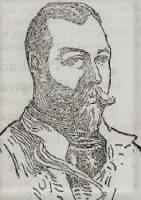
Not a seat was left empty and nonstop clapping attests to the delight that pervaded the program.
Mr. Nicholson MC opened the show at 9:30 PM with Mr. Moffat's rendition of several jolly songs.
Mr. Symons sang with equal virtuosity. Mr. Macmillan recited a heartfelt monologue very properly.
The tableaux vivants arranged by Mrs. Elliot and Robson were masterfully presented.
The duo Excelsior received an equally warm and enthusiastic round of applause.
The program inserted a session of flamenco songs and dances which made the delight of the British colony, plus a session of magic pulled off by the distinguished amateur Agustín Burgos.
We are indeed sorry that lack of space bars us from inserting more details, but the fact is that the festival flooded the auditorium with good cheer.
The anthems Marcha Real and God Save the King, this one sung by the whole auditorium, wrapped up the night.
It would be desirable to have such attractive and enjoyable shows on again.
(El Correo Gallego. October 15, 1910, page 2)
Before the end of 1910 the New England faced two tough competitors. Teatro Romea had since August been offering a daily mixture of varietés and cinematographs. Teatro Jofre reopened on December 4 after rewiring an "excellent and splendid" electrical installation and presented a "magnificent festival" that drew a "distinguished audience including many ladies and pretty misses."
Around 1:00 AM on November 21 the body of dockyard master driller John Farrell was found dead in his boarding room. He was 38 years old, married, Roman Catholic and a native of Scotland (ECG. November 21, 1910, page 2). He was taken at 5:00 PM the same day to the Catholic Cemetery with a cortege of British Catholics presided by Mr. Rechea, Mr. Campbell, Mr. Muir, master Roberts and the viceconsul in uniform (ECG. November 22, 1910, page 2). The autopsy done at noon on November 22 revealed the cause of death to be pulmonary edema; John Farrell was buried immediately afterwards (ECG. November 23, 1910, page 2).
The British colony, "wishing to show solidarity with their fellow countrymen," agreed to stage a benefit show on Tuesday December 20 at the New England with the proceeds going to Mr. Farrell's widow and children (ECG. December 16, 1910, page 2).
The newspaper did not report the benefit show.
Ten days later the colony notified the press about another upcoming concert in the pavilion scheduled for Saturday January 7, 1911. "Mr. Nicholson will organize the music program and the earnings will fund the Victoria football club" (ECG. December 30, 1910, page 2).
The concert of January 7 turned out "beautiful and brilliant" and the audience "numerous and distinguished" (ECG. January 9, 1911, page 1). Miss Mason and misters Robson, Massey and Moffat sang "deliciously"; moreover Miss Mason at the piano and the boy Sampablo del Villar on the violin played select pieces. At the function's conclusion the orchestra interpreted Marcha Real with everyone standing. Subsequently Miss Mason played and the auditorium sang the British anthem.
The New England presented another zarzuela company, Cristóbal y Orozco, on Thursday January 12 (ECG. January 13, 1911, page 2). The debut was a "brilliant success" and despite the disagreeable weather a "numerous and distinguished crowd went to the pavilion." They watched the debut of the Spanish version of Leo Fall's operetta, Die Dollarprinzessin ("The Dollar Princess").
The winter storms of reference started blowing in the afternoon of January 13. "The state of the sea in the bay was awesome, as few times prior seen" (ECG. January 14, 1911, page 2). A barge loaded with forty tons of coal plunged to the bottom and the two mariners on it were "miraculously rescued," a fishing vessel broke its moorings, battered another and nearly struck a corvette, the steamships Amboage and Ferrolano cancelled their service, another steamship out on the open sea had to return to port, a chimney got blown down, and peasant women from the seaside hamlet of Cobas [14 kilometers away] said the ocean had a "terrifying aspect" and the "gigantic waves" swept far ashore.
Nevertheless the crowd that night at the New England was "numerous." On Sunday January 15 an "enormous mass of spectators" gathered. On the 17th "almost all the armchairs were taken." The two sessions of the 19th were "great artistic and financial successes." Saturday 21 and Sunday 22 brought "brimful houses."
The zarzuela company of Cristóbal y Orozco closed its gig before a "large assembly of customers" on Thursday January 26 (ECG. January 27, 1911, page 2).
The second troupe booked by the New England arrived to the city in the afternoon of February 7. It was Montijano's comic-dramatic company, back for a third year (see 1907 and 1908). Its third debut took place at 9:30 PM on Thursday February 9. The ticket prices were 1.50 Pesetas for a padded seat with armrest, 0.85 Pesetas for a seat on the first row of benches, 0.65 Pesetas for the benches behind, 0.55 Pesetas for general admission; the municipal entertainment tax was charged to the customer and the theater added a novel 5% surcharge "destined for panhandlers" (ECG. February 8, 1911, page 2).
The attendance of February 9 was "numerous" with almost all the tickets sold. The numbers increased on the 10th, but the newspaper took up a worrisome plea to the "zealous local-police chief" to forestall the gathering of beggars in the vicinity of the New England box office: "the beggars harass everyone who goes to the box office and in truth the spectators already pay a tax to relieve those unfortunates, hence their cadging must be averted for it also sullies a people's culture" (ECG. February 11, 1911, page 2).
At this time the city was looking forward to and preparing for the arrival of a division of the Royal Navy, seven warships and 4,990 crew. The festive events being readied included a special lunch enriched with the songs of Airiños d'a miña terra (see 1906) in the Arsenal on Sunday to honour the British admiral, commanders and officers, a formal ball and banquet at Teatro Jofre on Monday, a special afternoon tea followed by dancing at Navy Headquarters on Tuesday where beside the British contingent "many families of the elegant Ferrolian society" were expected to attend, military bands to play in honour of the British mariners, a gala function at the New England, the installation of several "voltaic arches" on the landing dock to be lit up during the Fleet's stay in the harbour (ECG. February 8, 1911, page 2). Note: The newspaper misjudged the dates; things happened a day earlier (End of Note).

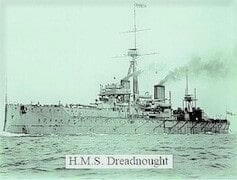
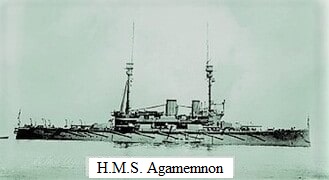
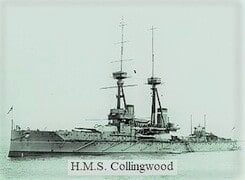
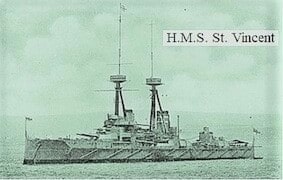
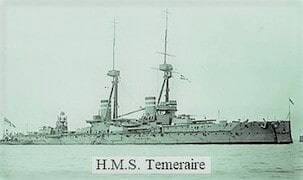
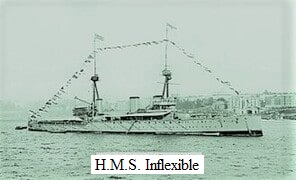
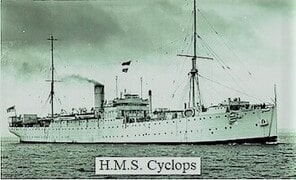
The battle group arrived on Saturday February 11 as expected, under the command of Admiral Sir William H. May. Ferrol's streets were full of locals and out-of-towners who wanted to see or visit the ships of the British fleet.
Upon arrival the admiral was complimented by top civilian and military authorities. Eight hundred sailors came ashore on leave, no unpleasant incidents recorded. Many bars and cafés swarmed with people, British sailors consumed a lot of wine and beer. Local police arrested several children for pestering the Britons, asking them for cash and tobacco.
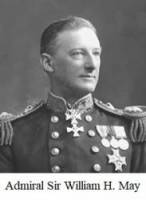
On Saturday a sumptuous banquet was held at 8:00 PM in a very spacious salon of the Sociedad Española de Construcción Naval quarters. Red carpet draped the granite staircase. At the first landing and on the wall facing the entrance to the banquet room, the white characters on a red banner read, "May, We Welcome You," an "affectionate salute to the courageous British crews in the dignity of their illustrated and chivalrous Admiral" (ECG. February 13, 1911, page 2). Seven monumental arches on the upper floor sparkled with strips of coloured electric bulbs. Every country's flag and signals covered the walls of the banquet chamber which palpitated with bouquets, branch décor, art, light and life. The dining table was exceedingly long, set in a straight line but for a section arranged in the shape of the uppercase letters M, A, Y. Silk ribbons bearing the colours of the British and Spanish ensigns ran down the table's middle. The tablecloths and the broadloom were immaculately white.
The menu of this banquet was: Entrées: oysters, entremets, consommé. Main dishes: fish in Turkish sauce, partridge meat, asparagus, ham, truffled turkey. Desserts: ice cream, pastries and coffee. Beverages: Riscal, Sauternes, dry sweet sherry, champagne and liqueurs. Optional: tobaccos.
The chorale Airiños d'a miña terra (see November 17, 1906) performed the following pieces during the banquet.
On the same day the British colony put on a "variety concert" at 7:30 PM in Teatro Jofre. Seven hundred and fifty sailors attended, some Spaniards did also. The variety show, delivered entirely in English, ended a little before 10:00 PM. The captain of H.M.S. Collingwood thanked the British colony for its deference.
On Sunday a hundred and fifty sailors of the Catholic faith attended Mass in the military temple of San Francisco. Two brigades of the evangelical faith went to the evangelical temple on Iglesia Street.
That same day a banquet for twenty-eight lower ranks, fourteen Spaniards and fourteen Britons, was celebrated aboard a Spanish cruiser. Spanish chief petty officer first class, Nicolás Patiño, sat at the head of the table. The menu of this banquet was: Entrées: entremets. Main dishes: Paella valenciana, sirloin à l'espagnole, dariole moulds of legumes, lobster, roast beef. Desserts: Cheeses, pudding, fruits, pastries. Beverages: Rioja, sherry, champagne, liqueurs, coffee and tea. Optional: cigars.
On the same day the British colony staged possibly the same "variety concert" in Teatro Romea; many British mariners were present.
Two Agamemnon sailors jumped ship on Monday 14. That same day the depot ship Cyclops left port at 4:00 PM bound for Portland. "This vessel always departs ahead of the rest because its sailing speed is slower" (ECG. February 15, 1911, page 2).
On the same day the New England staged a function at 9:30 PM in honour of the British mariners. A "numerous public" and many British sailors attended (ECG. February 15, 1911, page 2). The police inspector urged the owner of the New England to implement the provincial government's ban on smoking at entertainment venues and to solicit the help of the policemen who frequented the theater should he need assistance (ECG. February 13, 1911, page 2).
Many people gathered in the harbour to watch the departure of the six remaining warships at 4:20 PM on Tuesday 15.
From the 16th to the 24th every function of Montijano's comic-dramatic company at the New England drew a sizeable audience. Three sessions tallied a poor attendance because the play had been staged too often or because the weather was too rough.
Another untoward incident (see March 13, 1907) occurred over the February 25-26 weekend. During the intermission between the third and fourth act of the evening function a certain section of the public demanded the orchestra play La Marsellaise. The musicians declined and the demandants protested loudly. To avert a serious disturbance the conductor of the orchestra sat down at the piano and played the revolutionary song with the Governor's leave.
Montijano's comic-dramatic company said good-bye on Saturday March 4; the newspaper did not cover the event.
On March 30 the newspaper noted succinctly that Justo Tenreiro González the pavilion's owner was travelling that day to A Coruña in the company of the box office assistant (ECG. March 30, 1911, page 2).
The zarzuela company of Cristóbal y Orozco returned to the New England on April 15 and so did the "usual" favourable attendance figures. The newspaper reported daily and generously on the subsequent functions.
The newspaper report of April 29 transmitted a complaint by the little theater's "habitual" patrons regarding the "deplorable" state of the pavement on a nearby street. "It's the acme of apathy that a public route should remain in that condition. Until when will the street bear its lamentable state?" (ECG. April 29, 1911, page 2).
The company of Cristóbal y Orozco said good-bye on Saturday May 27; the newspaper did not cover the event. However the attendance figures from April 15 to May 27 were good to excellent with only two or three exceptions.
Meanwhile Teatro Jofre and Teatro Romea had adopted the pavilion's original format of blending cinematograph and varietés sessions. On July 9 Teatro Romea was charging the following prices for admission: 1.50 Pesetas for balconies and deck, 0.25 Pesetas for a chair, 0.15 Pesetas for general admission.
On Saturday July 8 the British colony rented Teatro Jofre for another concert night. The program listed fifteen musical pieces including five funny songs entitled, "It serves you right," "The prehistoric family," "If I had been born a girl," "Waiting on the street corner," and "Things that a man can't do."
On Saturday August 5 the New England finally opened its own cinematograph season. Ticket prices for every show were 0.30 Pesetas for a padded seat with armrest, 0.20 Pesetas for sitting on a bench, 0.10 Pesetas for general admission. No extra charges.
On Saturday August 12 the pavilion advertised its willingness to "spare no expense" in order to delight "its habitual patrons" with the most recent cinematographs. These included that day's "precious" reel of "long duration" entitled, The Coronation of King George V (ECG. August 12, 1911, pages 1-2). However the "precious reel" was no scoop; Teatro Romea had shown it on July 16.
Every day that goes by adds a new success to the many attained in the prosperous and long life of this theater.Its delicious indoor temperature and its central location are incentives that aid in excellent fashion the cultural cinematograph spectacle bred here.
Today there will be entertaining new sessions with debuts which will delight the public.
Reel titles:
- Patines sobre el agua (Skates on the water).
- Tonino estrena el cuerno de caza (Tonino tries out the hunting horn).
- Buenas amigas (Good female friends).
- Bellezas de Dinamarca (Beautiful scenes of Denmark).
- El amuleto (The lucky charm).
- Perro fiel (The faithful dog).
- Toribio, pescador de caña (Toribio and the fishing rod).
- Amor y sacrificio (Love and sacrifice).
Sessions at 7:30, 8:30, 9:30 and 10:45 PM.
(El Correo Gallego. September 2, 1911, page 2)
The cinematograph season ended on Sunday September 17.
Montijano's comic-dramatic company returned on Saturday September 23. The ticket prices and surcharges in effect were the same as on February 7 except for the general admission tickets, their price had dropped to 0.45 Pesetas, a hint of accounting bonanza.
Montijano's second debut of the year drew a full house. The New England garnered hit after hit like in the good old days, eclipsing Teatro Jofre and Teatro Romea anew. The three weekend sessions of September 30 to October 1 were full houses and many potential customers could not get in.
A good measure of the popularity enjoyed by Montijano's company in Ferrol is the agglomeration of customers outdoors and the applause which the artists reap with every representation indoors.(El Correo Gallego. October 2, 1911, page 1)
On Friday October 13 the Ferrolian child prodigy Pepito Arriola (1896-1954) arrived in the city around 6:00 PM. More than 2,000 people greeted him by the old city gate in spite of the drizzle.
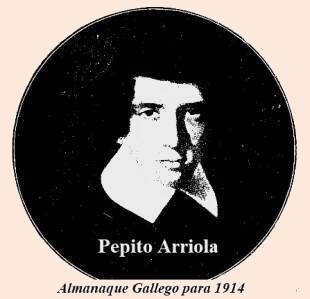
The newspaper interviewed the boy and his mother.
"What impression did Ferrol's reception give you?" "Unforgettable. I loved this town because I heard my mother speak of it with great affection, and upon experiencing its hearty welcome I believe I love it as much as my mother does, which is the most I can say."We talked to his mother while the boy played with his pet dog.
"My stay must be short," she told us, "because we are bound by compulsory contracts abroad. We came to Ferrol to manifest our affection towards it and to give a benefit concert in favour of the defenseless."
"You mentioned that Pepito seems good and intelligent," she continued. "He is very good, he has a heart of gold, as people say. When we were in the United States he made the acquaintance of two poor children who had an excellent aptitude for music. One day he pleaded with me for us to protect them...From that day Pepito underwrites their expenses, one is in Budapest and the other in Berlin."
Mrs. Arriola told us that they would be travelling to the United States very soon and that the dog, named Yeah, would stay behind under the care of Arriola's father in Ferrol.
(El Correo Gallego. October 14, 1911, page 2)
Pepito Arriola gave two concerts in Teatro Jofre, one on Saturday and one on Sunday.
The New England dedicated Monday's regular evening function to him. The small theater erected a "handsome balcony" and when he made his appearance the whole "very distinguished auditorium" stood up and "acclaimed the precocious artist" (ECG. October 17, 1911, page 2).
Pepito Arriola left Ferrol by automobile on Tuesday October 17 at 8:45 AM.
Montijano's second gig of the year ended on Sunday October 22; the newspaper did not cover the event.
On October 28 Town Hall ordered a safety inspection for every theater. This municipal ordinance was probably triggered by a string of successive storms, one of which turned off the electricity across the city in the middle of the night due to the felling of trees on power lines. "There were moments when the whistling of the wind appalled" (ECG. October 21, 1911, page 2).
The New England restarted cinematograph sessions on Saturday November 4 and carried them through to year's end. On December 17 as the municipal hospice residents invited by the New England to one of the sessions exited the premises a worker was seen handing out cookies to them (ECG. December 18, 1911, page 2). On Christmas Day the pavilion advertised a "monster" program "such as has not been seen before in Ferrol" and which consisted of a string of seventeen cinematographs.
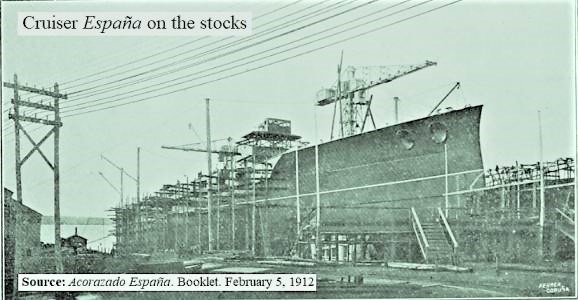
A grand assembly of Ferrolian personages met on December 10, 1911, in the Chamber of Commerce to set the budget for the celebrations surrounding the launch of the first cruiser built by Sociedad Española de Construcción Naval and the concomitant visit of the royal family to Ferrol. The cruiser was still on the stocks then (photograph on the left).
The grand assembly unanimously approved a budget of 31,350 Pesetas for the two celebratory days, February 4-5, 1912.
Cruiser España was eventually launched at 3:37 PM on Monday February 5, 1912.
The British colony inaugurated its own school at 8:00 PM on Thursday November 2, 1911. The British companies involved in the construction of the new Arsenal built the new school in under three months. At this time the British colony was estimated to number 1,000 persons (La Correspondencia Gallega. September 11, 1911, page 2).
The location of the school is unbeatable, airy, plenty of sunlight and greenery. The broad fields around the site may in good weather be used for leisure, sport or as a schoolyard during recess.The institution covers an area of two hundred square meters and is one storey tall, built of brick, cement, wood and iron; flat shingles cover the roof. The walls have large windows on every side and are covered with maps and posters of animals. There are four doorways.
The school employs a range of ventilators. The washrooms are modern and have abundant water at their disposal.
Girls and boys study in separate classrooms that are heated in winter. The desks are long, have under-the-table trays and seat four students each.
The total budget for the construction and completion of the school was 20,000 Pesetas.
(El Correo Gallego. November 3, 1911, page 2)
On December 16 the newspaper noted succinctly that Justo Tenreiro González had paid the municipal land tax of 1,000 Pesetas payable by the New England theater.
New England began the new year showing cinematographs.
The only movie from Saturday January 6 extant in Youtube is Aeroplano Santos Dumont.
The following morning all the employees of Ferrol's theaters held a meeting at the New England to discuss ways of helping José Camos, a fellow worker seriously ill and penniless. Camos was a member of the pavilion's stage crew. The meeting decided on a charity festival as the best option and the New England ceded the premises temporarily for that purpose. Camos died at 4:00 PM on January 10, unbeknown to the participants of the January 7 meeting. These met four hours later and upon being told the sad news about their unfortunate colleague decided to stick with the original plan but announcing that the festival's proceeds now would go to comfort the dead man's mother who was also ill and penniless.
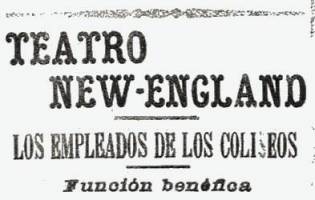
The festival went ahead at 9:00 PM on Saturday January 13. It consisted of three parts. The first part had four acts: a symphony played by the theater's sextet, a batch of two "precious movies," a batch of two songs and the monologue, "What I am going to be," recited by a child member of the Red Cross. The second part had five acts and was similar in structure though with different artists; the surplus fifth act was a one-act operetta. The third part had three acts, a symphony, a batch of movies and the popular chorale, Airiños d'a miña terra.
The festival admission tickets were 1 Peseta for a padded seat with armrest, 0.60 Pesetas for a seat on the first row of benches, 0.50 Pesetas for the benches behind, 0.35 Pesetas for general admission; all taxes borne by the customer. "Well-informed persons have told us that many seats in the armchair section were reserved as of Thursday and that merely eight or ten benches were still available today and very few general admission tickets" (ECG. January 13, 1912, page 2).
The festival was a complete sellout. The theater was so "completely crowded" that it was necessary to add more armchairs. Every social class was represented in the auditorium. The function finished at 1:00 AM and the net revenue "to be handed over to Camos' family today" was 608.45 Pesetas (ECG. January 15, 1912, page 2).
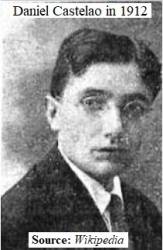
On February 6 the New England hosted a "most brilliant Galician fiesta" at 9:30 PM. The event brought together two famous folklore chorales, Pontevedra's Aires d'a terra and Ferrol's Airiños d'a miña terra. The Pontevedrese chorale sang Foliada de Ribeira, Alalá de Pontevedra, Alalá de Ourense, Foliada de montaña. The Ferrolian chorale interpreted Lonxe da terriña. A lone artist delivered Un adios a Mariquiña and Tangaraños.
"Almost all seats are already taken up and the little theater on Iglesia Street will be an undersized space to house the enormous crowd expected" (ECG. February 6, 1912, page 2). The newspaper's prediction was correct, "the small theater was full of people perhaps as never before...the public drowned out the final notes of bagpipe and choir with its thunderous ovations and ceaseless rhythmic clapping."
Daniel Castelao (photograph on the left) was present that night and the "genial artist" was "applauded to the hilt" for his improvised caricatures of the royal family and other figures including some members of the chorale (ECG. February 7, 1912, pages 2-3).
The New England ceded another charity function during the February 24-25 weekend to an unemployed family of acrobats who wished to try their luck somewhere else but lacked the money to do so.
The family organized two cinematograph/varietés sessions. The tickets cost 0.75 Pesetas for a padded seat with armrest, 0.40 Pesetas for a seat on the first row of benches, 0.30 Pesetas for the benches behind, 0.20 Pesetas for general admission. Children and military rank and file paid half price. "Despite the offer of many social dances and other attractions common to the Carnival celebration roundabout the theater filled to capacity both days" (ECG. February 26, 1912, page 2). The family asked the newspaper to relay their thanks to everyone who had helped out, to the New England Company and to its treasurer, Cesáreo Rodríguez.
One of eight cinematographs shown on Sunday March 17 was Vista de Pekín (View of Peking).
On Sunday March 31 a local policeman briefed his superiors about several children who had hurled stones at the female doorkeeper of the British School, injuring her on the head (ECG. April 1, 1912, page 1).
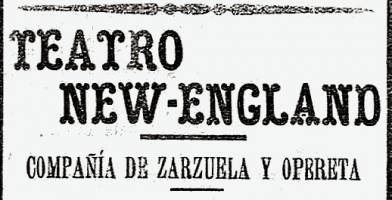
On Saturday April 6, right near the end of Holy Week 1912, New England presented Bellver's company of zarzuela (ECG. April 6, 1912, page 2).
The initial Saturday and Sunday functions were sellouts, "not a single seat was left empty" (ECG. April 8, 1912, page 2). During the next weekdays the attendance abode "very numerous."
On Wednesday April 10 British School pupils put on a show in Teatro Romea arranged by their principal, Oliver Watkins. The "beautiful and pleasant festival of the British children" started at 8:00 PM. The audience was composed of members of the British colony and Ferrolian society..."the theater looked gorgeous...the festival, split in two parts, turned out very entertaining" (ECG. April 11, 1912, page 2).
On the same day El Correo Gallego informed that Justo Tenreiro González had notified Town Hall regarding his compliance with and completion of overhaul work in the New England requested via official letter (page 1).
The pavilion continued raking in dough: two full houses on Sunday April 14. Even on weekdays attendance figures remained high. "Yesterday, as every day, a very large number of customers gathered in the pretty theater on Sagasta Street"; the theater was "invaded by a very distinguished public" in every session (ECG. April 17, 1912, page 2). Note: Perhaps a stretch of Iglesia Street had been renamed Sagasta officially, but such arbitrary name changes never stuck for long (End of Note). "A very numerous public" (April 22). "As usual the public attending the various sessions of the little theater on Sagasta Street was very numerous" (April 25). "A very numerous public attended yesterday's sessions" (April 29).
A segment of the British colony returned to the New England for the May 6 festival dedicated to the local Press Association. "The New England will look gorgeous and imposing today, full of distinguished ladies and pretty misses, spirited military men, significant civilian personalities and a hefty representation of the modest and honourable social classes" (ECG. May 6, 1912, page 1).
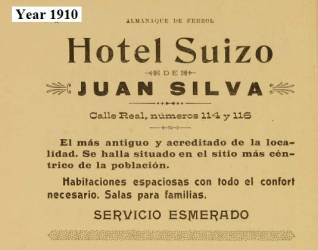
The program of the Press Association festival was the following.
El Correo Gallego number of May 7 devoted two and a half front page columns to describe and extol the Press Association festival night. That same day the association invited representatives of the pavilion and lead actors and actresses of the Bellver company to a two-hour lunch at Hotel Suizo (advertisement above and to the right) as a token of appreciation and gratitude for having hosted said festival (ECG. May 8, 1912, page 1).
The pavilion kept tallying throng after throng of patrons. "The theater was full de bout en bout yesterday in all the sessions" (ECG. May 11, 1912, page 2). "It seems superfluous to us to report that a select and very numerous public invaded the theater on Sagasta Street yesterday to watch all its sessions" (May 13). And so on and so forth.
Throughout Bellver's engagement Teatro Jofre and Teatro Romea limited themselves to cinematograph sessions mainly. The newspaper's spotlight all this time was on the live performances in the New England. The other two venues were completely eclipsed.
Bellver's company said good-bye on Monday May 27 and the pavilion's first zarzuela season ended. The little theater closed its doors to the public for about a month and a half.
On the same date, May 27, Teatro Jofre announced its commitment to install central heating by September 20, and on the Thursday started its own live shows season with Madrid's symphony orchestra.
Also on May 27 Mr. Robert Hide, a machinist with one of the Arsenal's dredges, died suddenly in his home at 3:00 PM. He was 60 years old, a widower who left behind two sons in England and a young woman who kept him company. His corpse was driven to the cemetery on Tuesday at 6:00 PM, the entire British colony accompanying the casket, and he was buried on the "dissidents sector" of the graveyard (ECG. May 29, 1912, page 2).
The New England pavilion reopened on Sunday July 14 with "the debut of a new and marvelous cinematograph projector, the most stable, the most perfected and the most up-to-date of its class today" (ECG. July 13, 1912, page 2). The movie session times were the usual ones, 4:00, 5:00, 7:00, 9:00 and 10:00 PM, and so were the prices.
Monday's report praised the new projector and its cabin of "galvanized iron more than two millimeters thick, having an internal coat of asbestus and cooled by two regular fans plus an extractor expelling air through a vent in the ceiling" (ECG. July 15, 1912, page 2). "We understand that Mr. Tenreiro the theater owner plans to make improvements in the locale which will surely delight the public."
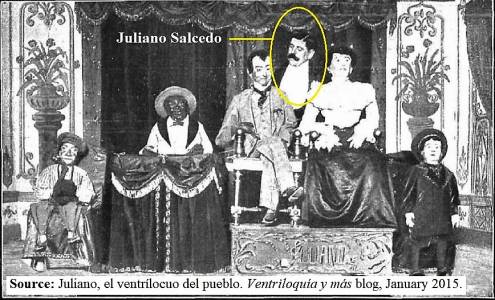
Occasionally the New England interspersed short-lived varietés, as Teatro Jofre and Teatro Romea did during Bellver's engagement.
Mr. Juliano Salcedo the "champion of Spanish ventriloquists" (photograph on the right) and his daughter Julita Salcedo, "a very noteworthy musician who enjoys sensational success, an outstanding artist in her genre," performed from Saturday August 3 to Sunday 11.
A troupe of gymnasts bearing the name, "Hermanos Wernoff," performed from Thursday September 12 to Sunday 15.
On Friday 20 the newspaper announced an "extraordinary festival" for the following day. The cinematograph session of 10:00 PM would incorporate a live performance of the Ferrolian chorale, Airiños d'a miña terra, "whose presence in the program alone," states the newspaper, "would impel the Ferrolian public to haggle over a seat in the elegant New England theater" (ECG. September 20, 1912, page 1).
The same report adds that the films were requested by telegraph. Apparently they were lengthy, "splendidly" diverse, "extraordinarily" up-to-date and as beautiful as anyone could demand. Furthermore the pavilion's screen and projector rendered the moving images "extremely sharp."
Saturday's "extraordinary festival" drew a packed auditorium (ECG. September 23, 1912, page 2).
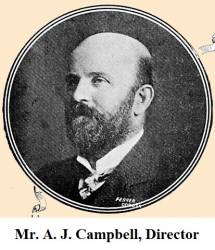
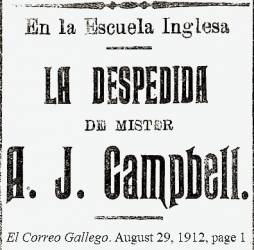
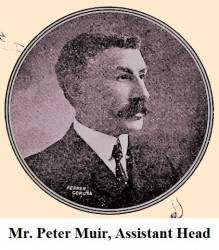
The Board of the British School convened a meeting of teachers, pupils and invited "distinguished members" of the colony for the afternoon of Tuesday August 27. The meeting was presided by "the illustrated engineer Mr. Spiers." On his right sat Mr. and Mrs. Campbell and Mr. Muir. On his left sat Mr. Prechous, Mr. Orr, and three members of the Board.
Mr. Spiers explained that the purpose of the meeting was to enable the pupils to express the respect and affection that Mr. and Mrs. Campbell had always shown toward them and to demonstrate their profound gratitude for the protection which the pair had afforded them.
The pupils then sang some pertinent songs.
Afterward Mr. Spiers invited Mr. Orr to say a few words. What follows is an abridgement of what he said,
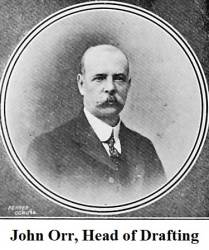
I have the honour of expressing on behalf of the School Board our gratitude and thanks to Mr Campbell and his distinguished spouse for their many acts of kindness toward us.Over the past eighteen months the School Board has frequently needed to consult them...After overcoming many hurdles we see ourselves in possession of this magnificent schoolhouse thanks to the protection of Mr and Mrs. Campbell.
Perhaps the children gathered here would like to know the object of this School Board, and in two words I can explain it: the British colony appointed us a year and a half ago solely to look out for the interests of the children. We meet once a month...and read with great interest the reports of Mr. Watkins, your teacher, regarding the progress being made by the pupils.
Mr. and Mrs. Campbell helped the school financially and showed interest not only in all the pupils but on every British child...at Christmas time not a single child was left out wherever the Christmas tree party was held...and now before he departs he has bequeathed this beautiful piano to the School.
Our unanimous wish is that he may enjoy a long life and the greatest happiness—he and his distinguished family—and may the new life he embarks upon bring him much prosperity.
(El Correo Gallego. August 29, 1912, page 1)
The next one to speak was Mr. Prechous. His remarkable speech deserves the full transcription that follows,
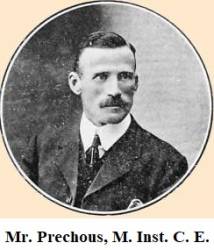
Ladies, gentlemen and children:This afternoon's convocation of Ferrol's British School pupils with the aim of bidding "good-bye" to Mr. Campbell and his wife on the occasion of their departure to Scotland is one of the dearer ideas conceived. At the same time nothing could be more appropriate since Mr. Campbell has, among all the members of the British colony, been one of the most enthusiastic proponents of educating these British children in a manner analogous to our country's school system.
It was he who stimulated "Club Victoria" to contribute with all the generosity its strength could muster to the collection of funds in pursuit of that goal, and it is thanks in large measure to his efforts that this beautiful building was built, whose construction enhanced the educational facilities and to which must be coupled the valuable stewardship of Mr. Watkins and Mrs. Mason.
Without any doubt the fact that Mr. Campbell is a married man with children led him to see the indispensable need of having the means in Ferrol to enable children to continue their education in a fashion analogous to the one they received in our country, with the object that should they wish to broaden their studies upon returning to their home country they would not be found lagging.
Mrs. Campbell too has always been the first one to organize and liberally sponsor meetings at this School. Those fun-filled "Christmas tree" parties, those tea times with pastries and many other fine events including some very clever games she was in the habit of concocting, all these must be remembered. Those get-togethers made the big children like us and the small children like you forget that we are absent from our dear country.
I am not going to extend myself a lot this afternoon except to address the children particularly, you children who are starting to live and who, like little lambs, ignore what awaits you in this life. In a few years you will depart school and start a life of struggle for your own welfare whatever your ambitions might be. I have used the word "struggle" because life is in our modern context a struggle for the man who must work to stay alive, not exactly a contest in the sense you children interpret the word (i.e., knock your schoolmate to the ground or he will) but a contest of brainpower.
When that time arrives you will do well to have engraved in your imaginations the name of some gentleman you have known, whom you want to emulate, whose example you wish to follow. Children, you who are acquainted with Mr. Campbell you will not find a better example than his, believe me, even if you searched everywhere across our country.
In the first place he is the genuine stripe of British Christian gentleman which is for us, as you all know, the best type of man the world devises. As a working man he is one of the most eminent naval architects of our country, and presently he leaves Ferrol to assume the management of one of the biggest Shipyards of Scotland in the metropolis where he started his studies, almost on the same street.
When you begin to ponder his accomplishment of that lovely career at his age, for he is still a young man, merely forty-six years old, who in only twenty-two years went from the drafting workshops to becoming the managing Director of one of the better shipyards, I believe you will understand what I mean when I tell you that you can not find a more inspiring example.
Of course not all of you can be Mr. Campbell, but all of you can use the same blueprint and strive to develop those same traits that served him so well. Then you will live at ease: your reward is sure. And on the question of whether those traits dispense happiness you need only look at Mr. and Mrs. Campbell.
I do not know what to say to you, small girls, I am a bachelor and I had no sister. Besides, I am more accustomed to dealing with men than with women. But all of you know Mrs. Campbell. Well then, you can do no better than to follow on her footsteps.
With these few words I have the honour of seconding what Mr. Spiers said regarding our sorrow in having to bid farewell to our friends, Mr. and Mrs. Campbell, while at the same time wishing them every sort of happiness in their new residence.
(Ibid., page 1)
Next Mr. Watkins the school principal spoke to thank Mr. and Mrs. Campbell.
A little girl presented Mr. Campbell with a decorative marquee as a a souvenir of the pupils' gratefulness.
Mr. Campbell spoke last; he thanked his audience and advised the children to study hard.
When he finished his delivery all the children acclaimed him and his wife.
Next everyone sang the British national anthem.
As the children filed out of the schoolhouse an "enthusiastic" Mr. Spiers handed out tea cakes, chocolates and candies.
El Correo Gallego number of August 7 states that Mr. Campbell's next workplace was going to be Glasgow's William Beardmore and Company (page 1).
On Monday August 26 delegates of Sociedad Española de Construcción Naval organized a farewell banquet in the deluxe Hotel Suizo at 9:00 PM. There was music, singing, and the dinner ended at 1:00 AM on Tuesday (ECG. August 27, 1912, pages 1-2).
On Wednesday British personnel of Sociedad Española de Construcción Naval held another farewell party at the British School (ECG. August 30, 1912, pages 1-2).
Mr. and Mrs. Campbell departed from Ferrol at 2:30 PM on Friday August 30. Several personalities and some members of the British colony saw them off. The couple headed first to A Coruña by automobile, then to Liverpool by boat (ECG. August 31, 1912, page 1).

On Sunday October 6 the local British soccer team, Victoria, played the local Spanish team, Ferrol, in a long-awaited contest on a field called Batallones located in front of a naval infantry garrison. The match had been postponed several times in September due to a "most abnormal" early start to the rainy season, but the sun shone brightly this first Sunday of October and by 4:00 PM a large crowd camped around the pitch, all the available chairs taken, anxious to watch the game (ECG. October 7, 1912, pages 1-2).
The contest began at 4:30 PM. "Both teams entered the match full of zest and enthusiasm, weaving passing combinations truly remarkable for their superb intelligence." The newspaper withholds the tally of goals scored but acknowledges the superiority of Victoria and the grit of Ferrol. The British won the first of two games handily, it would seem.
The return match was played on Sunday October 13, same time, same pitch. The British led 3-0 when many spectators invaded the field in anger at what they judged to be biased refereeing (ECG. October 14, 1912, page 1).
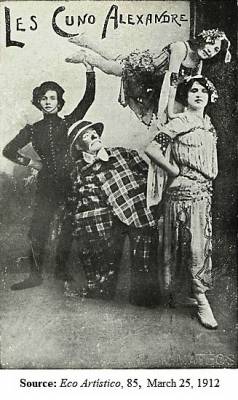
Meanwhile on the same weekend the New England pavilion hosted Les Cuno Alexandre, another varieté which filled the theater to capacity and left the patrons "very satisfied." Les Cuno Alexandre (photograph on the left) were an Italian team of female acrobats and a clown.
One of the gymnasts whose stage name was "La Bella Emilia" (probably the woman in front) sang solo in a separate act.
The last day of performances by Les Cuno Alexandre was Sunday October 20.
On October 30 a cause against Justo Tenreiro González was submitted to the Corunnese High Court for the shooting of a firearm (Diario de Santiago. November 3, 1912, page 1).
Bellver's company returned to the New England on Saturday October 26. The public reacted with the same enthusiasm it had shown throughout the company's first gig: full or nearly full houses on most weekends and a "numerous affluence of public" on most weekdays.
Several representations were reprises of the first gig, albeit with different artists, but this did not depress attendance figures. An example was Molinos de viento (May 6, November 16); the newspaper reported full houses in every session that weekend of November 16-17 (ECG. November 18, 1912, page 1).
On November 21 the newspaper carried a plea to the mayor and to the municipal works department by the habitual patrons of the theater to please patch up Sagasta Street. "The pavement has turned into an impassable mud pit," and they volunteered, "some carts of gravel and crushed coal would solve the problem" (page 2).
On December 24 the zarzuela company staged what was "perhaps the hit of the season, a veritable artistic exploit" (ECG. December 24, 1912, page 2),
On the afternoon of the same day the British School hosted the customary Christmas tree party. "Many British families were present. The children received diverse and fine toys" (Ibid., page 2).
Bellver's company stayed at the New England for the remainder of the year.
On December 28 El Correo Gallego noted succinctly that Justo Tenreiro González had paid the municipal land tax of 1,000 Pesetas payable by the New England theater (page 1).
Meantime the distinguished members of Spanish and British Ferrolian society were preparing to go to the New Year's Eve Ball organized for the evening of December 31 by the Club Recreativo in Teatro Jofre (ECG. December 27, 1912, pages 1-2).
Bellver's company terminated its contract on Sunday January 19, 1913.
Montijano's comic-dramatic company debuted for the fourth year on Saturday January 25.
In the 9:30 PM session of Tuesday January 28 the company presented Quintero brothers' comedy, "Puebla de las mujeres" (Women's Town). While that day's "vermouth session" (at 6:00 PM) had all padded seats occupied, the evening session registered lower attendance figures.
In the 6:00 PM session of Tuesday February 4 the company presented Paul Gavault's 1909 romantic comedy, "La Pétite Chocolatière" (The Chocolate Girl). This comedy was made into a movie in 1932; here is the title song,

At 5:30 PM on Saturday March 8 the company staged Gaston Leroux's 1907 thriller, "Le mystère de la chambre jaune" (Spanish: "El misterio del cuarto amarillo"; English: "The Mystery of the Yellow Room"). Almost all tickets had been sold by late Thursday, but the New England management took the trouble of advertising the debut on page 3 of El Correo Gallego (photograph above).
The four weekend sessions were jam-packed (ECG. March 10, 1913, page 2).
Leroux's popular thriller was made into an Argentinian movie in 1947.
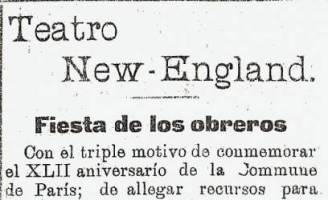
Montijano's comic-dramatic company said good-bye on Sunday March 16.
On Saturday March 22 the "working classes" organized a festival at 9:00 PM in the New England theater "to commemorate the forty-second anniversary of the Paris Commune, to gather funds for the construction of a 'House of the People' in Ferrol, and to lend financial help to the Madrid publication, 'El Socialista'" (ECG. March 24, 1913, page 1).
An enthusiastic group of amateurs put on Joaquín Dicenta's drama, Juan José. The evening drew a "numerous" affluence of customers.
On Sunday March 30 the theater switched to cinematograph sessions at 3:30, 4:30, 5:30, 6:30 and 9:30 PM.
On Saturday April 5 at 9:00 PM the pavilion hosted a charity function organized by Sección Artística Socialista (Socialist Art Section) in succour of families affected by the accidental explosion of February 25.
Bellver's company returned to the New England on Saturday April 26 and debuted with Pablo Luna's 1913 zarzuela, "Los Cadetes de la Reina" (Cadets of the Queen).
At 9:30 PM on Thursday May 29 the company staged Joaquín Valverde's 1913 "lyrical folly," the term is the author's own description of the zarzuela, "Los apaches de París" (The Apaches of Paris). The affluence of customers was "very numerous."
The pejorative moniker, "Apache," initially identified a tribe of savage individuals living in a civilized milieu. A tattoo exposed Apache affiliation (ECG. January 29, 1912, page 3). A degenerate and perverse individual clothed in elegant dress was an Apache too (Noticiero de Vigo. April 29, 1912, page 1). Secular schools bred criminal youngsters thirteen years old or less, scattered Apache seed in the streets (La Región. May 4, 1912, page 1). The newly installed Portuguese Republic was a band of Apaches (El Correo de Galicia. May 14, 1912, page 1). Eight Apaches assaulted an Italian man in Madrid, leaving him in critical condition with multiple stab wounds (ECG. September 2, 1912, page 3). Majority members of the Hungarian Parliament insulted Opposition members with the epithets, "Apaches! Miserable! Cowards!" (El Regional. September 24, 1912, page 1). Two anarchists the members of an Apache society dissolved in Marseille were arrested in Barcelona (Diario de Galicia. December 28, 1912, page 3). A band of Apaches desecrated more than a hundred graves in Paris (La Voz de la Verdad. January 7, 1913, page 2). The secular school, the atheist school, the rationalist school, threatened to turn Spain into a cage of lunatics, a nursery of Apaches and anarchists, unless the crushing strength of the political Right intervened (Noticiero de Vigo. February 15, 1913, page 1).
From being a synonym of "hooligan" the label "Apache" broadened progressively to bag anarchists, rationalists and the political Left,
The battlelines are drawn.On one side is honest Spain, the Spain of order, the Spain which works and progresses. On the other is the Spain of hubbub and commotion, the Spain of the wildest demagogies, the Spain which pacts with Apaches and anarchist elements abroad, the anti-patriotic, pro-Europe Spain, deprecating everything national, the Spain of the inconscient...
Who will obtain victory?
(El Centinela. January 19, 1913, page 3)
Joaquín Valverde's zarzuela, "Los apaches de París," spoofs a fictional French detective who fails to apprehend two Spanish petty thieves-with-a-conscience. The preposterous and bizarre plot seems an excuse to exhibit the apocryphal dance of the French Apaches or to flaunt Valverde's Apache song, which is translated liberally below,
An Apache's life circumscribes
The fairest delights;
He prizes himself the winner
Crouching in his lair.
Apaches know how to contend
With stout, bold or brave men,
For in the quarrel's flare-up
We gamble our lives
And always triumph;—
Alas, life waxes so dull
When there's no need to fight!—
Bring more champagne here
And with a brimful glass
Of this nectar moussed
I shall never know fear;
Ah, it's our vital brew
Which fires up our senses
And woos luck in the brawl,
Love's scuffles most of all.
(Quinito Valverde and Luis Foglietti. Los apaches de París. 1913: S. Velasco Printer, pages 25-26)
The real Apaches of Paris were progressively dismantled by police raids that began in early 1910 and climaxed with infantry troops and Army engineers blowing up a garage on April 29, 1912, and a rented chalet on May 14. "The tragic end of the Apaches has generated euphoria in Paris" (Noticiero de Vigo. May 17, 1912, page 4).
The real Apaches of Paris were defunct when "Los apaches de París" premièred on March 4, 1913, in Madrid. Still did Valverde in some way glamourize them? It's not clear. Did the 1953 Walt Disney song, A Pirate's Life, glamourize piracy?
Two French movies, seventy years apart, did more or less "glamourize" the 1900-1913 Apache subculture of Paris. Here are the respective trailers,
Apparently Bellver's company said good-bye on Sunday June 15; the newspaper did not cover the event.
The newspaper reported on Friday June 20 that the New England had switched to a continuous showing of cinematographs. The picked star film of that day was the 1913 blockbuster, The Count of Monte Cristo.
On Monday July 28 the theater hosted an architecture seminar given by the president of the Corunnese Center of Culture. More than five hundred persons assisted.
Montijano's company returned for the second gig of the year on Saturday November 1 and started with the familiar comedy skit, Los Hijos Artificiales in the vermouth sesion (see 1907) and Zorrilla's classic, Don Juan Tenorio, (see 1907) in the evening. The debut was a success (ECG. November 2, 1913, page 2) and the exclusive representation of Don Juan Tenorio on Sunday brought two full houses (ECG. November 3, 1913, page 2).
On Friday November 7 the dismal weather, "afternoon and evening heavy showers that followed each other almost without pause," lowered the attendance numbers (ECG. November 8, 1913, page 2). The meteorological station of Neda Public School reported a rainfall of 83 litres per square meter from 8:00 AM November 7 to 8:00 AM November 8 (ECG. November 9, 1913, page 2). Despite persistent bad weather Saturday November 8 saw the theater "filled to capacity."
On November 11 at 6:30 PM the company staged Gaston Leroux's "El misterio del cuarto amarillo," and in the evening Antonio Casero's comedy skit, "El casado casa quiere" (A married man wants a house of his own)
The digital archive Galiciana has fifteen November days missing a digital copy of El Correo Gallego. Even so, it can be affirmed with confidence that the attendance figures for the whole month of November 1913 ranged from good to excellent except on weekdays of foul weather.
The digital copy of El Correo Gallego for the last available November day, the 25th, reported on page 2 that Montijano's company was rehearsing "the great social drama entitled, El pan de los pobres (The Bread of the Poor)."
The digital archive Galiciana has a digital copy of El Correo Gallego for just two December days.
The digital copy of December 30 does not mention the New England.
The digital copy of December 31 states that Montijano's company left for Toledo "without having realized in Ferrol the sweet hopes its two directors harbored" (ECG. December 31, 1913, page 1). The reporter submits two reasons: the absence of a "good leading actress" and the excessive number of functions. "The company scraped through thanks to the repetition of premières and to the representations of Don Juan Tenorio, for it has always had gratifying successes here. We wish the company better luck in Toledo."
The new year started on Saturday January 3 with a magician named "Dr. Arthur" and his assistant(s) who performed under the moniker, "Los comediantes de Lucifer" (Lucifer's comedians). The magician and his group departed on Sunday January 11. Their performances were interposed with cinematographs.
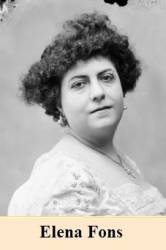
The digital copies of El Correo Gallego freely accessible online ignore the New England's functions completely for the rest of January and for February.
On March 14 the "eminent Spanish artist" Elena Fons (photograph to the left) debuted at the pavilion. Although she was originally scheduled to perform two days only the pavilion managed to retain the "genial artist" an extra couple of days.
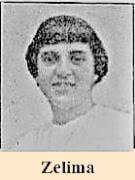
Muriente's company came next. The star was the manager's daughter (photograph on the right) who performed under the stage name, Zelima, "a most refined singer and dancer and a very good-looking woman" (ECG. March 19, 1914, page 2). Note: According to Hoy.es Zelima's real name was Enriqueta Murientes. She was murdered by a jealous suitor in 1916 when she was just eighteen years old (End of Note).
During the whole of that day and the following one Ferrol and county experienced very strong northwesterly winds, rain, hail and unusually cold temperatures. "Only those persons with a pressing need venture out on the streets" (ECG. March 21, 1914, page 1).
During the 6:30 PM session of March 21 Zelima executed "new, admirable and artistic dances and songs, both national and foreign." Subsequently she played the female half of the "Zelima and Henry" duet (Ibid., page 2).
During the 9:30 PM session Mr. Murientes presented "some admirable experiments of auto-suggestion which will amaze the audience." Both functions interspersed live performances and cinematographs.
The strong wind and rain persisted through March 26 (ECG. March 27, 1914, page 1).
The electric doll routine (May 7, 1908) made a return appearance on March 29.
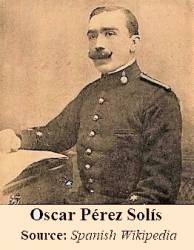
The New England functions were disregarded by the newspaper from March 29 until June 9.
On June 9 the Steering Committee of the Workers Center of Culture convoked its members and all the citizens of Ferrol to an 8:00 PM conference at the New England theater. The ex-captain of Artillery, Oscar Pérez Solís (photograph to the right), was going to be the conference's chairman and give a talk on the role of culture as a means of emancipation (ECG. June 9, 1914, page 2).
Mr. Solís' dissertation probably conveyed the line expressed by V. I. Lenin in the article, "Party Organization and Party Literature," published by the twelfth issue of the Social-Democratic magazine, "Novaya Zhizn," (New Life) on Old Style November 13, 1905. Two quotations from Lenin's article follow,
- Down with non-partisan writers! Down with literary supermen! Literature must become part of the common cause of the proletariat, "a cog and screw" of one single great Social-Democratic gear set in motion by the entire politically-conscious vanguard of the entire working class. Literature must become a component of organized, planned and integrated Social-Democratic Party work.
- Publishing and distributing centres, bookshops and reading-rooms, all libraries and similar establishments must be under Party control.
(Lenin Collected Works, 10. Moscow: Progress Publishers, 1965, pp. 44-49)
On June 11 the New England Company held a special function at 9:30 PM in honour of the visiting Marquises of Amboage, a function to which they were invited. The marquis (photograph to the left, below) and his wife assisted.

At 9:30 PM sharp the Marquises made their appearance on the balcony expressly installed for them inside the pavilion. The spectators who filled the place to capacity ("there wasn't enough room for a needle") cheered and hailed the pair, and these responded to the auditorium's enthusiasm with "that affability and courtesy which distinguishes them." The marquise, "radiant with beauty," wore a white crêpe dress with strawberry-coloured bow, black hat, earrings, a collar of white pearls and a wrist bracelet. She attracted the eyes of the numerous public throughout the entire evening (ECG. June 12, 1914, page 2).
The star on the stage that night was the "laureated" Ferrolian chorale, Airiños d'a miña terra. The members of the chorale received so much clapping after each number that they were compelled to sing others. And when the marquise heard their rendition of Xosé Baldomir's Meus Amores (My Loves) she expressed a wish to have the sheet music and the lyrics.
The two cinematographs shown were "gorgeous." The first one was Gaumont's 1914 production, Manon de Montmartre. The second one was "The disappearance of Mrs. Harper" (no references found).
Upon exiting the theater to return to the hotel the acclamations continued and persisted all along the route. Once in their hotel the "multitude" that was gathered outside compelled them to step out onto the balcony, from where the Marquis hailed Ferrol several times and thanked everyone present "with brief but very honed phrases."
On Thursday July 23 El Correo Gallego published an inconsequential report on the front page (!) about an aspiring artist's rehearsals at the New England. The report, though, reveals that there were functions going on at the pavilion and that the newspaper neglected them all. And this attitude persisted for the remainder of the year! Although the digital archive misses a few numbers during this period it is improbable that they carried any news about the New England until December 18.
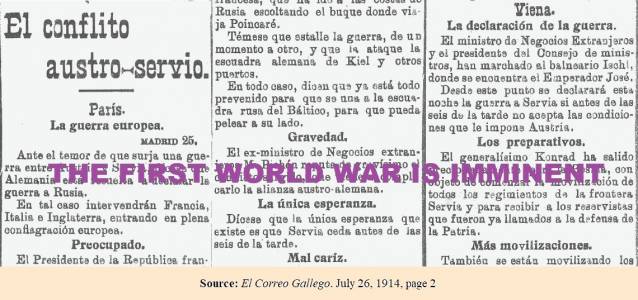
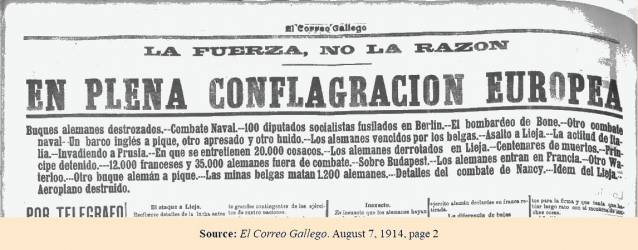
The British colony began to collect funds for wartime relief in the month of August. The revenue from the first month of operation was 1,500 Pesetas. The tally increased slightly to 1,578 Pesetas in the second. Both amounts were mailed to the Prince of Wales War Relief Fund (ECG. October 25, 1914, page 1).
On December 22 the British School held the customary Christmas tree party. "The place was extremely crowded as the entire resident colony assisted" (ECG. December 23, 1914, page 1).
On December 18 Town Hall notified Justo Tenreiro González that he had until January 1, 1915, to vacate the grounds where the New England pavilion was installed and to pay the land tax corresponding to the end of December (ECG. December 18, 1914, page 1).
Officially Town Hall had in its session of December 17, 1914, merely approved a report by a certain Revenue Commission proposing such action be taken based on the apparently voluntary request of Justo Tenreiro González to abrogate the building-and-rental permit granted in 1906 to Vicente Auboín Barcón and presently subrogated to him (Boletín oficial de la provincia de La Coruña, 108. May 9, 1916, pages 430-31). At the same time, however, Tenreiro petitioned Town Hall for a new location to install the pavilion in, which implies that his departure from the original location was involuntary and that some unassailable contender had forced his hand.
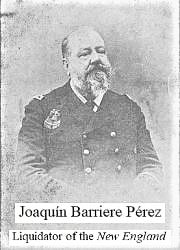
To make a dull, circuitous bureaucratic excursion short every attempt at relocation failed. Town Hall would propose and then rescind an emplacement until everyone concerned realized that the New England project was finished.
The Revenue Commission of December 17, 1914, also proposed that a new Post and Telegraph Office be built on the vacant lot. Town Hall approved the recommendation and found moneys to finally pave Sagasta and Iglesia streets!
The Post and Telegraph Office project in fact never got off the ground. Instead Town Hall in its session of June 30, 1915, considered an application from a fellow to place a children's merry-go-round on the former grounds of the New England theater. Town Hall deliberated and turned the application over to a certain Fourth Commission (Boletín oficial de la provincia de La Coruña, 228. October 2, 1916, pages 228-29).
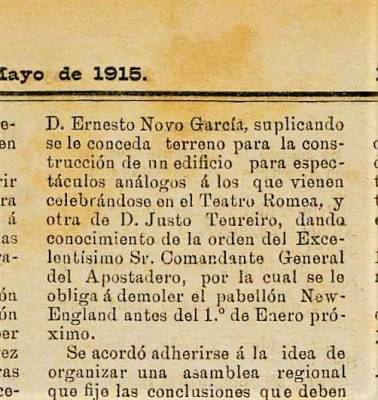
It is doubtful that even the merry-go-round materialized, for Town Hall in its session of September 23, 1915, approved a report from the Fourth Commission authorizing another fellow to set up some seesaws for children's enjoyment on the same spot (Ibid., 113. May 15, 1916, pages 451-52).
Either Town Hall was a veritable ship of fools or someone with the connivance of Town Hall had twisted Tenreiro's arm.
Indeed Town Hall was not a ship of fools, for the record of its session dated November 26, 1914, contains the following extract (photograph to the right),
The corresponding Commission has been informed of a plea by Mr. Ernesto Novo García asking that a plot of municipal land be ceded to him for the construction of a building for doing shows analogous to Teatro Romea's, and another plea by Mr. Justo Tenreiro acknowledging the injunction of the Most Excellent Sir Commandant-General of the Maritime Department whereby he is obligated to demolish the New England pavilion before the first of January next.(Boletín oficial de la provincia de La Coruña, 121. May 26, 1915, page 466)
Who was "the Most Excellent Sir Commandant-General of the Maritime Department" at the time? Joaquín Barriere y Pérez (photograph above, on the left).
He was appointed to the post on March 13, 1913, and relieved on May 13, 1915.
He died on April 10, 1921.
A few personal details about the former New England owner can be gleaned from the newspapers.
During the month of September, 1916, he and his "very beautiful" daughter Eulalia spent close to three weeks in Arteixo's thermal spa (ECG. September 7, 1916, page 1, and September 26, also page 1).
His name appears in a list of forty-four men having a firearm license (Boletín oficial de la provincia de La Coruña, 125. June 4, 1919, page 507).
On July 24, 1920, Eulalia married a young businessman the son of a Ferrolian hotel owner (El Ideal Gallego. July 24, 1920, page 4).
The description of a special religious procession reveals that Tenreiro had built a chapel in honour of the Virgen del Pilar (ECG. July 3, 1924, page 2).
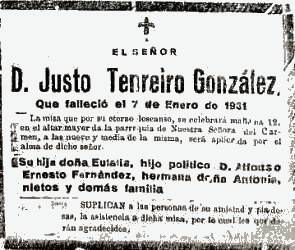
A Town Hall notice lists a street named after him (ECG. April 21, 1929, page 2).
He died on January 7, 1931.
Our esteemed Ferrolian neighbour Mr. Justo Tenreiro González has delivered his soul unto the Almighty, a person rightly appreciated in our city for his extraordinary gifts of frankness and affability.That is why his passing has been keenly felt.
(Galicia, diario de la mañana. January 9, 1931, page 3)
He was sixty-three years old (El Pueblo Gallego. January 9, 1931, page 8).
And what became of the vacant plot where the New England pavilion once stood?
The newspaper of Tuesday March 11, 1924, carries an editorial deploring the "local shame" that was the Post Office then. The office was dubbed the "salt storehouse," for it lay ensconced in a dim, cramped, moist basement where clerks had to make do with rickety furniture. The editorial next chides Town Hall for its failure to use the credit reserved in the State budget for the construction of a new post office in Ferrol,
And now our thoughts take us to the lot where the Post Office will be built, "which you presently observe fields of solitude, a sad mound..." The New England disappeared; in 1916 the magnificent lot was handed over to the State; Francos Rodríguez came to Ferrol and pronounced a wonderful speech; an unsightly water shutoff valve, the lid of a well, stands like the mouse from the labor of the hills; and from year to year the laughable figure of a Circo Feijóo clown seems to sum up the project which, like everything we do, had "the jump start of a horse and the finish of an ass."(ECG. March 11, 1924, page 1)
Notes: